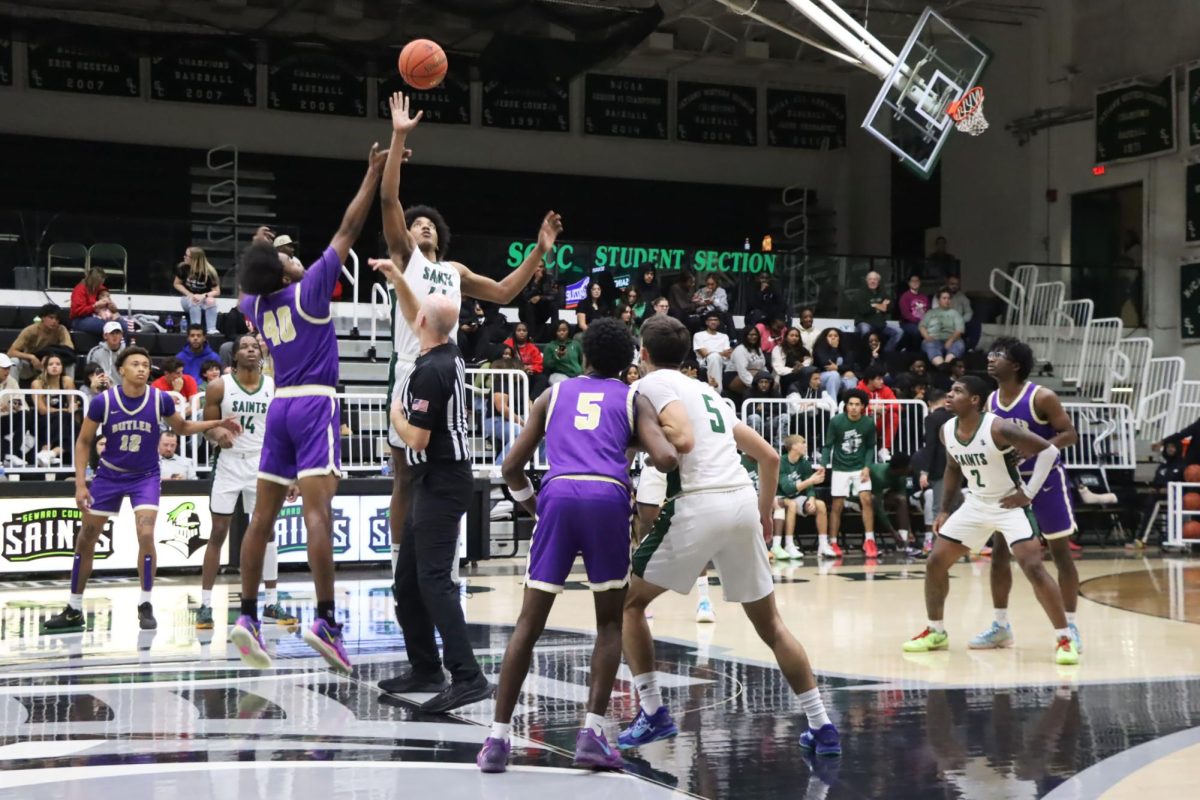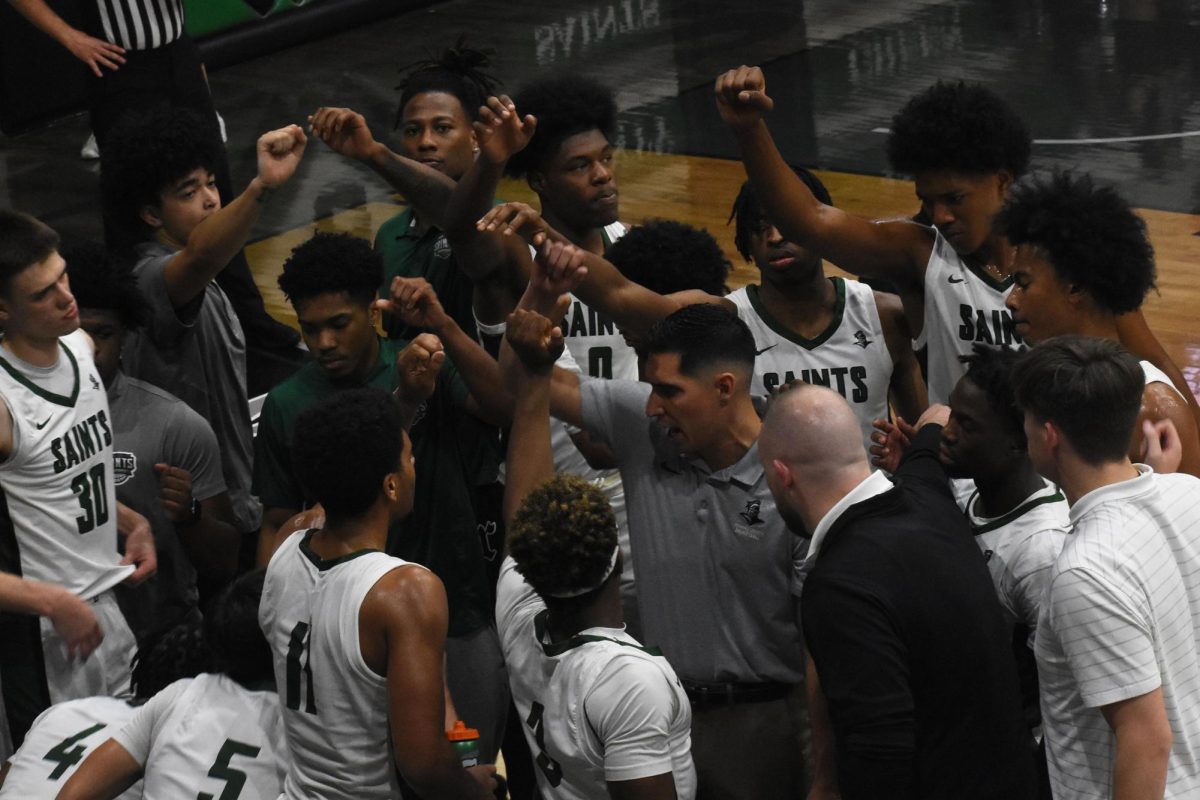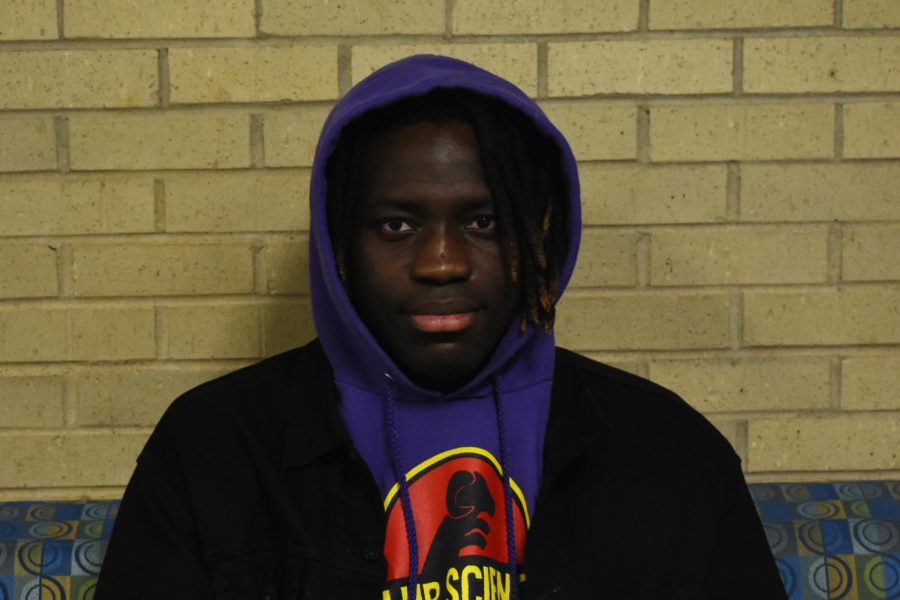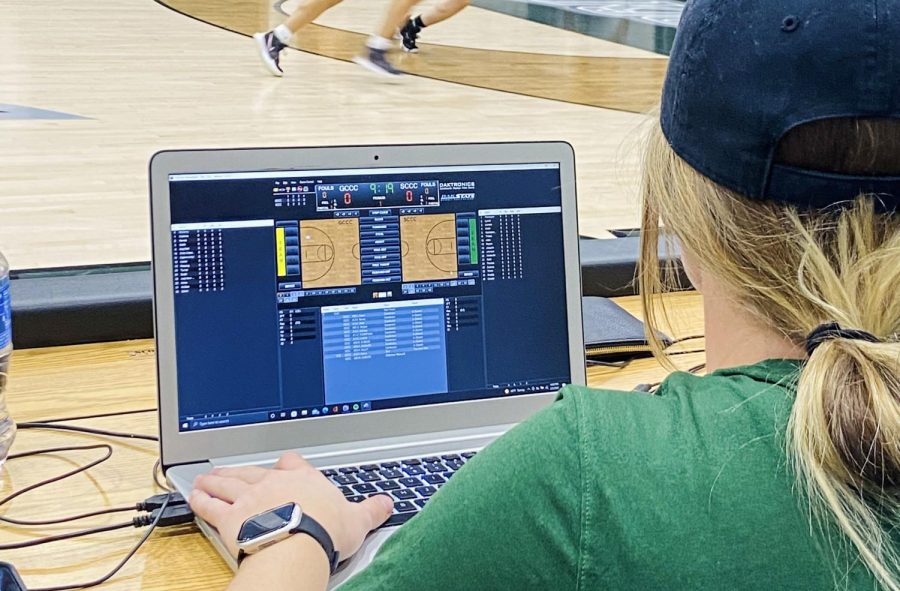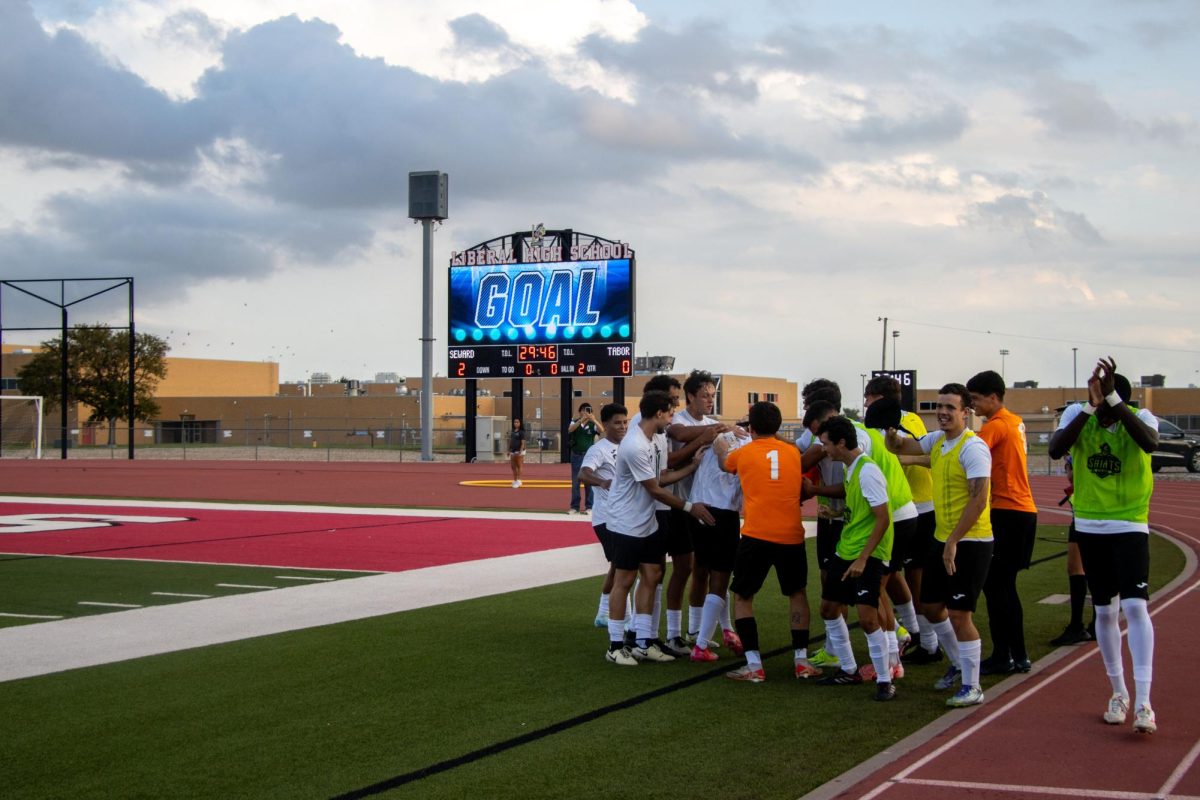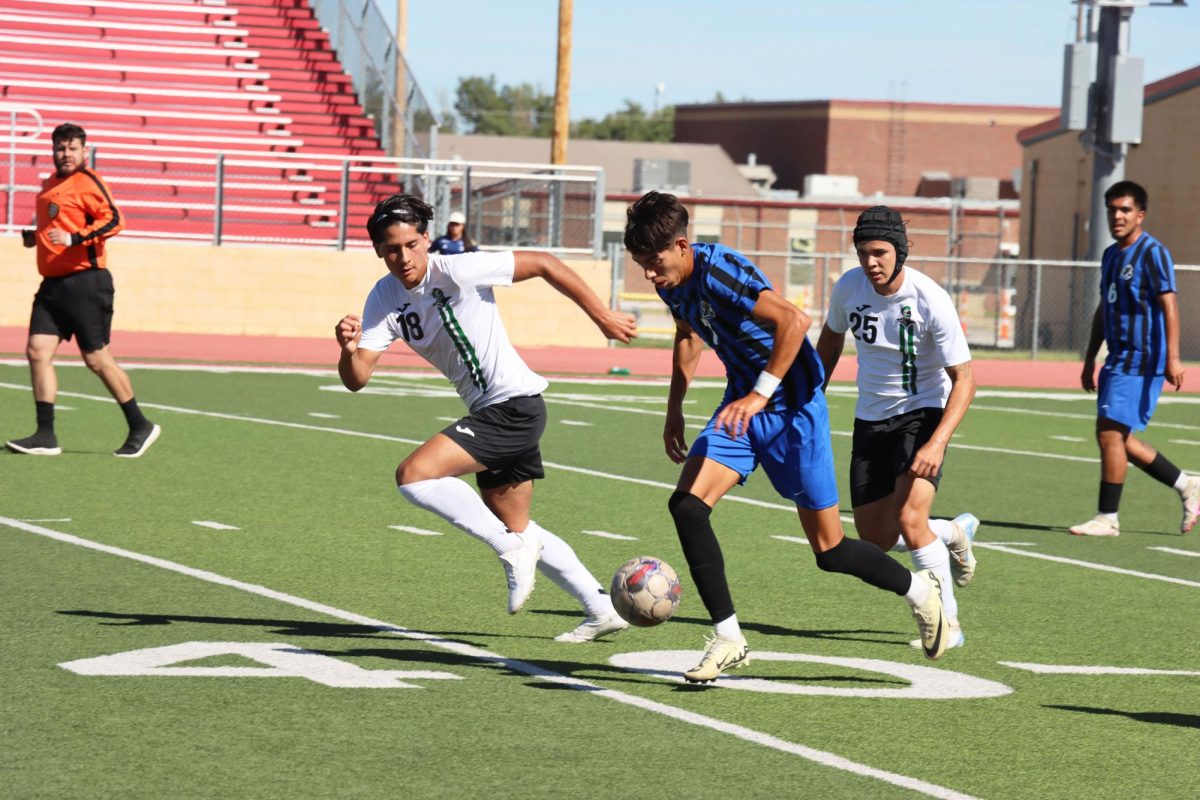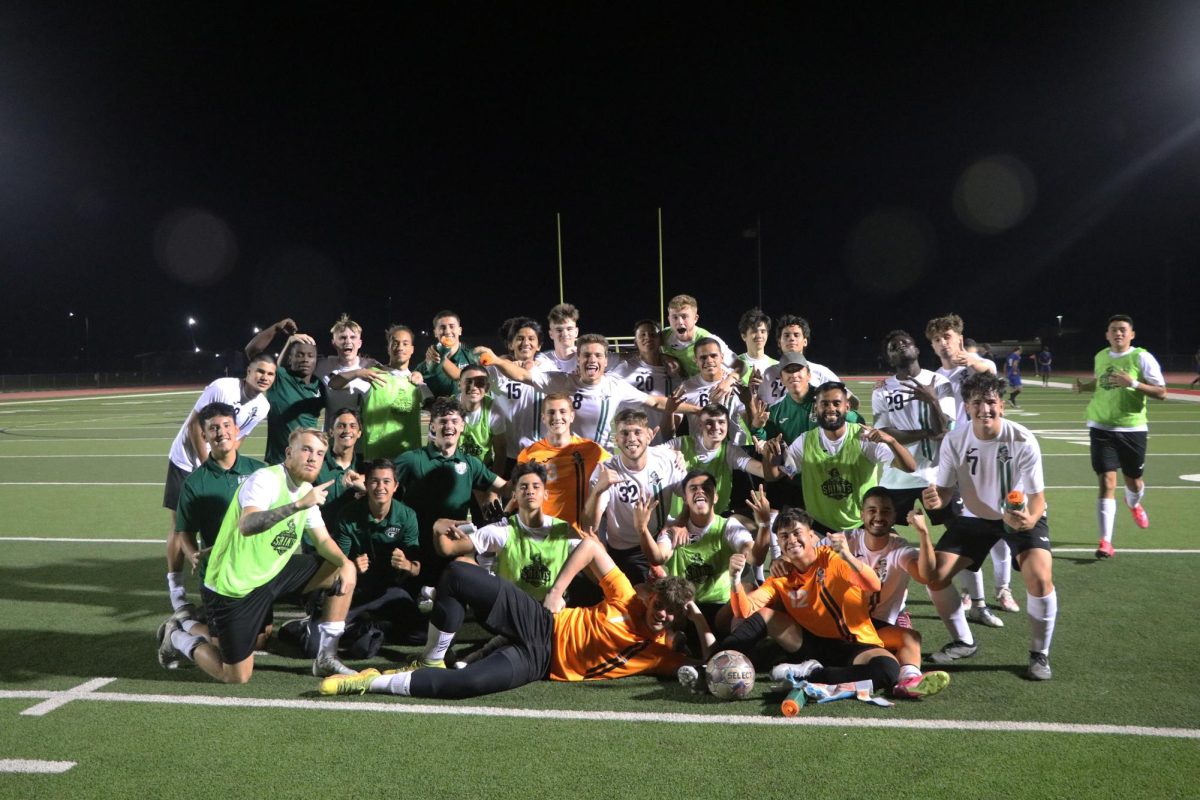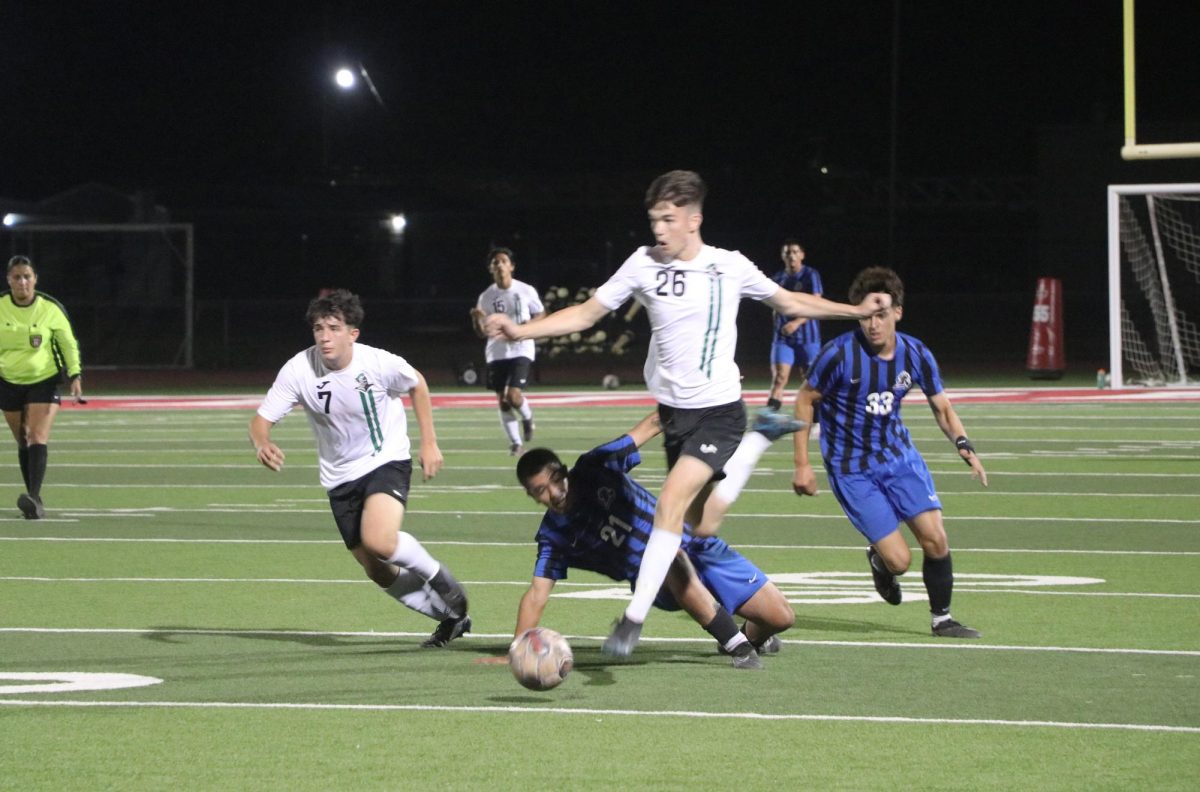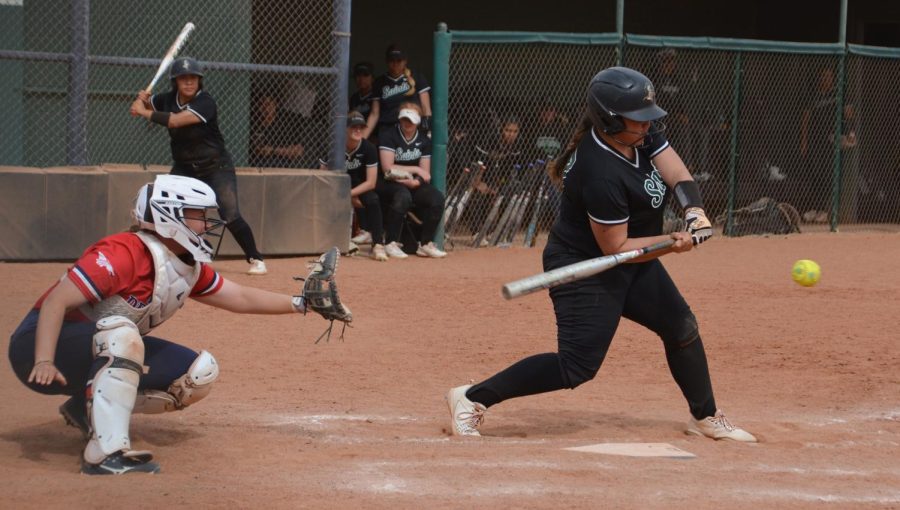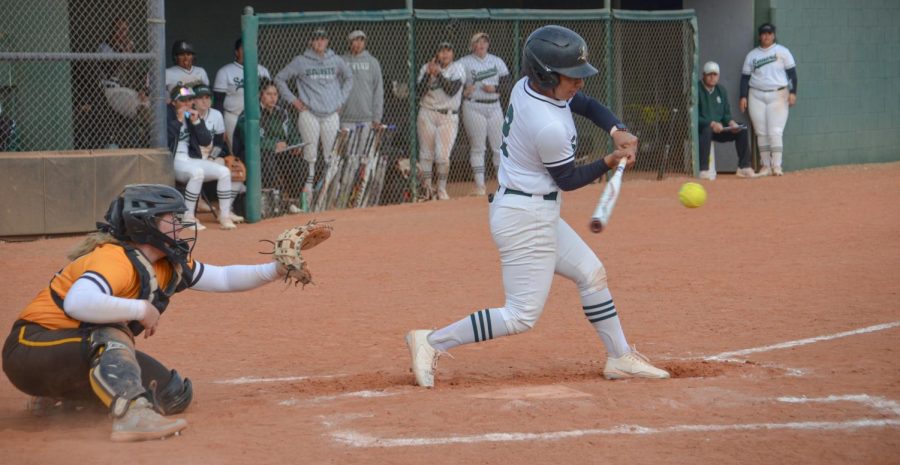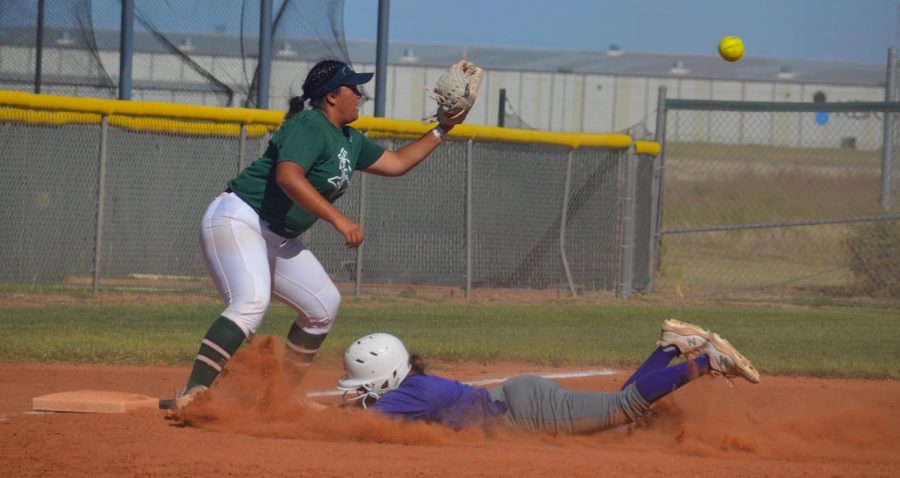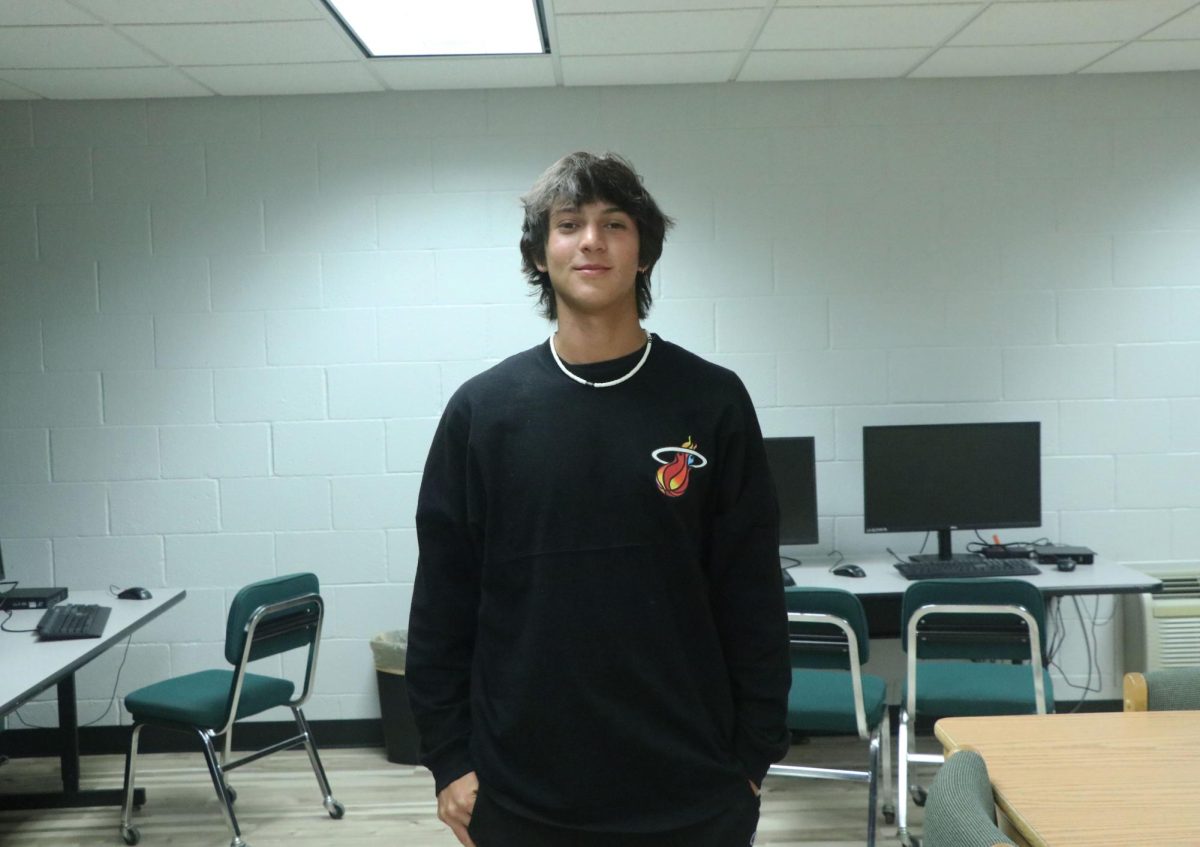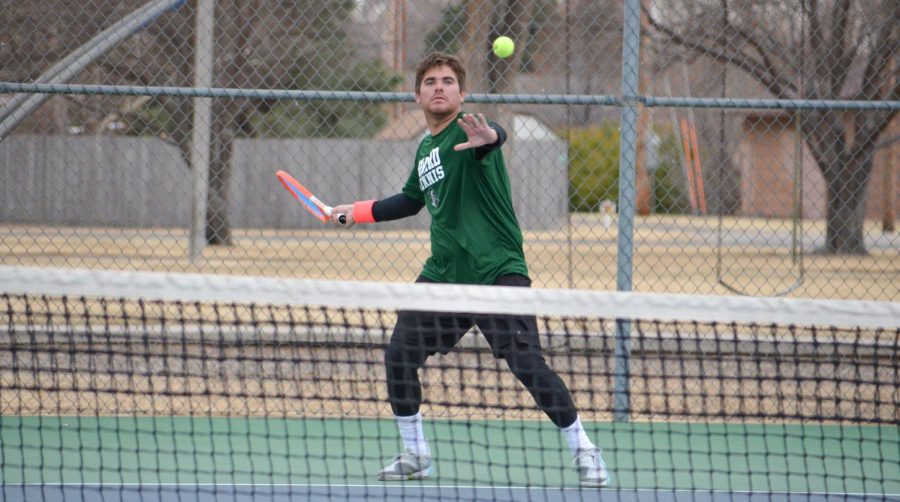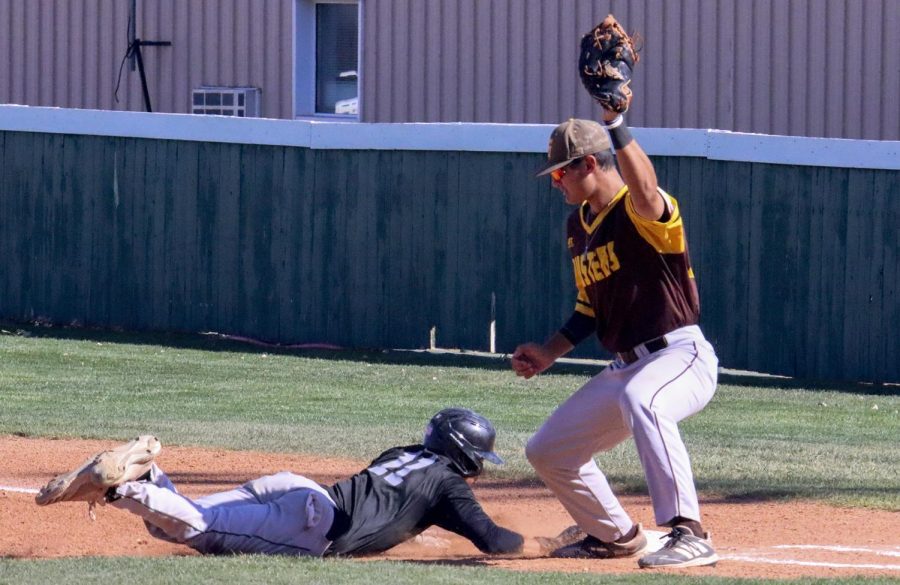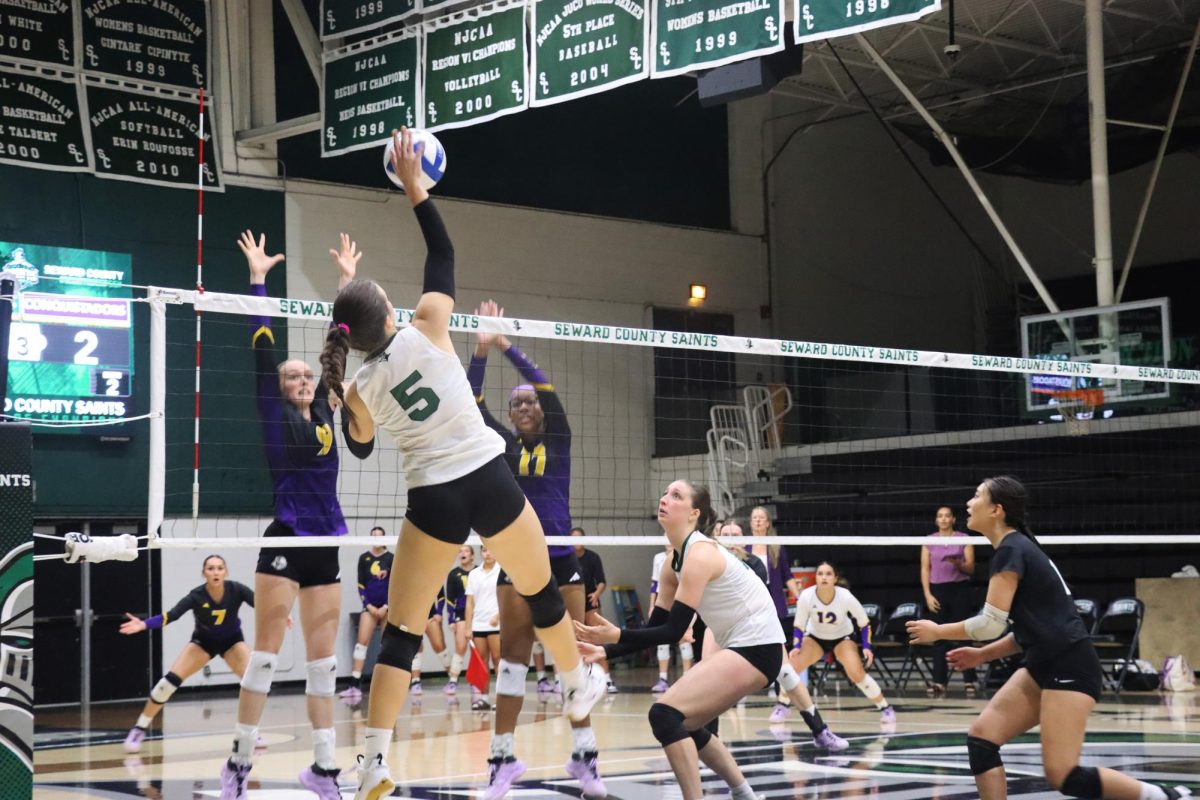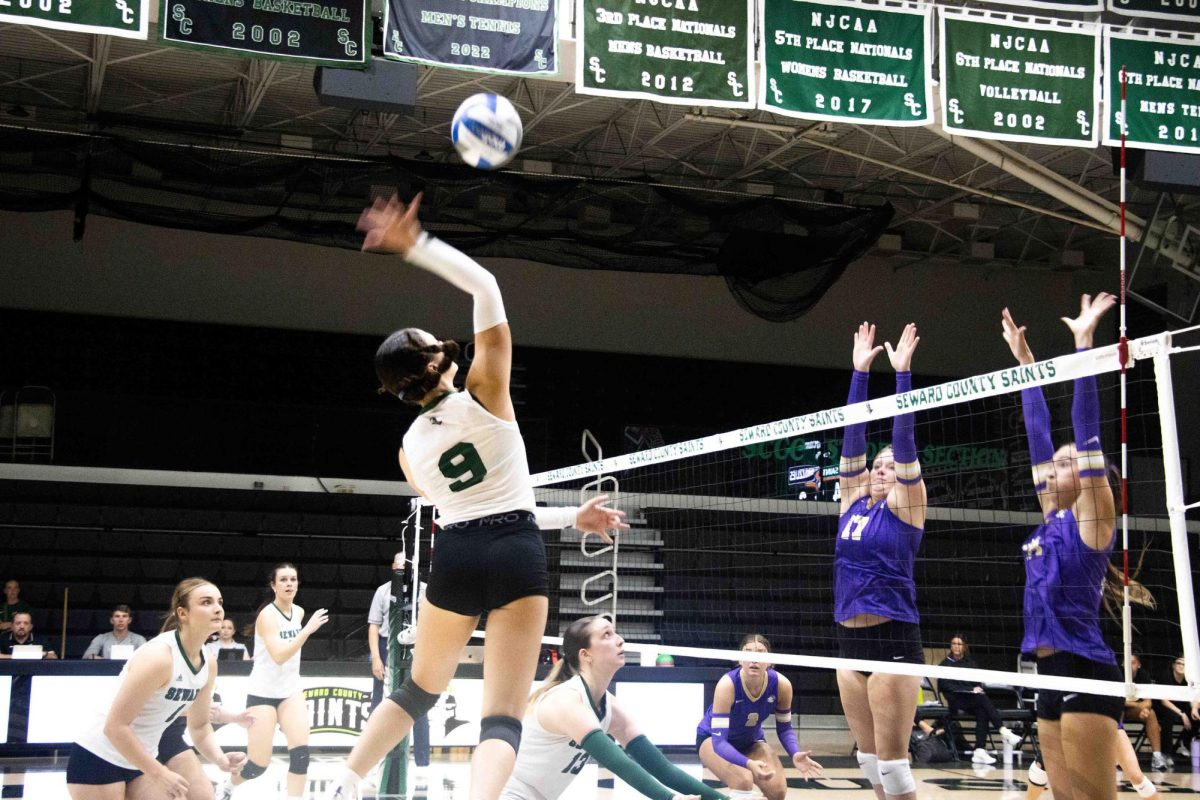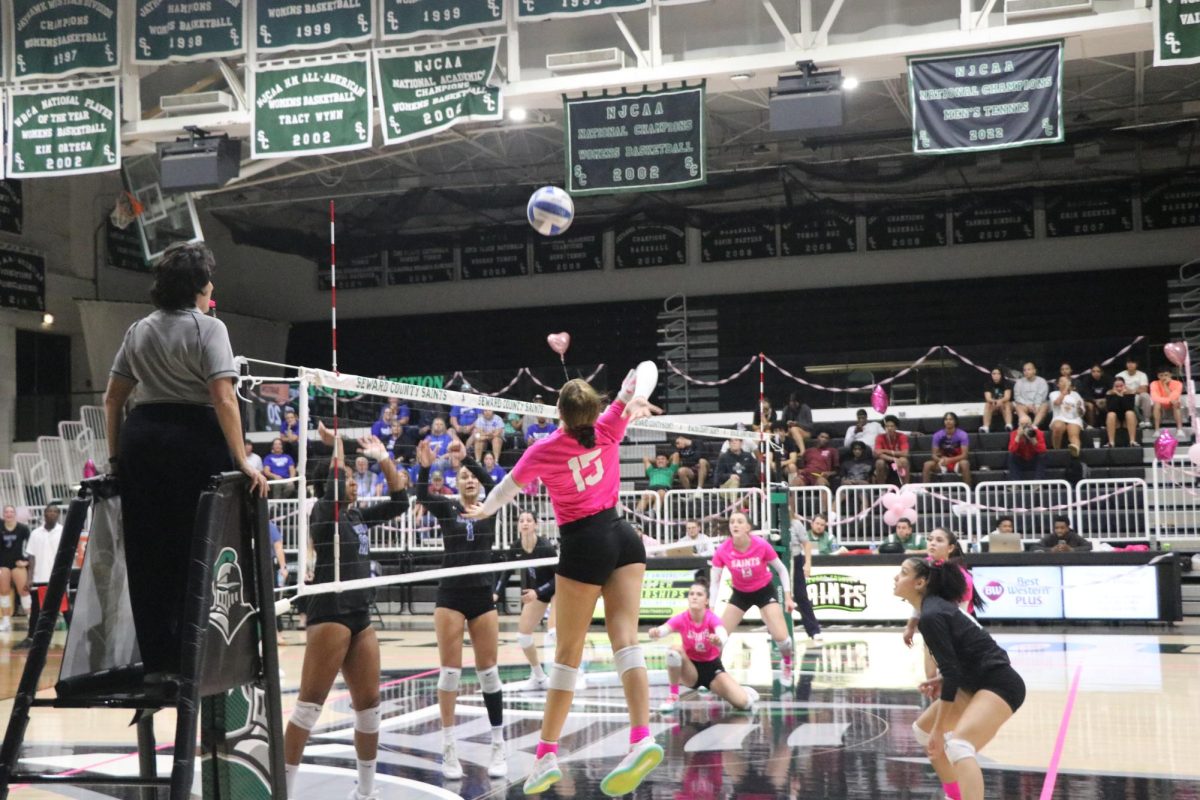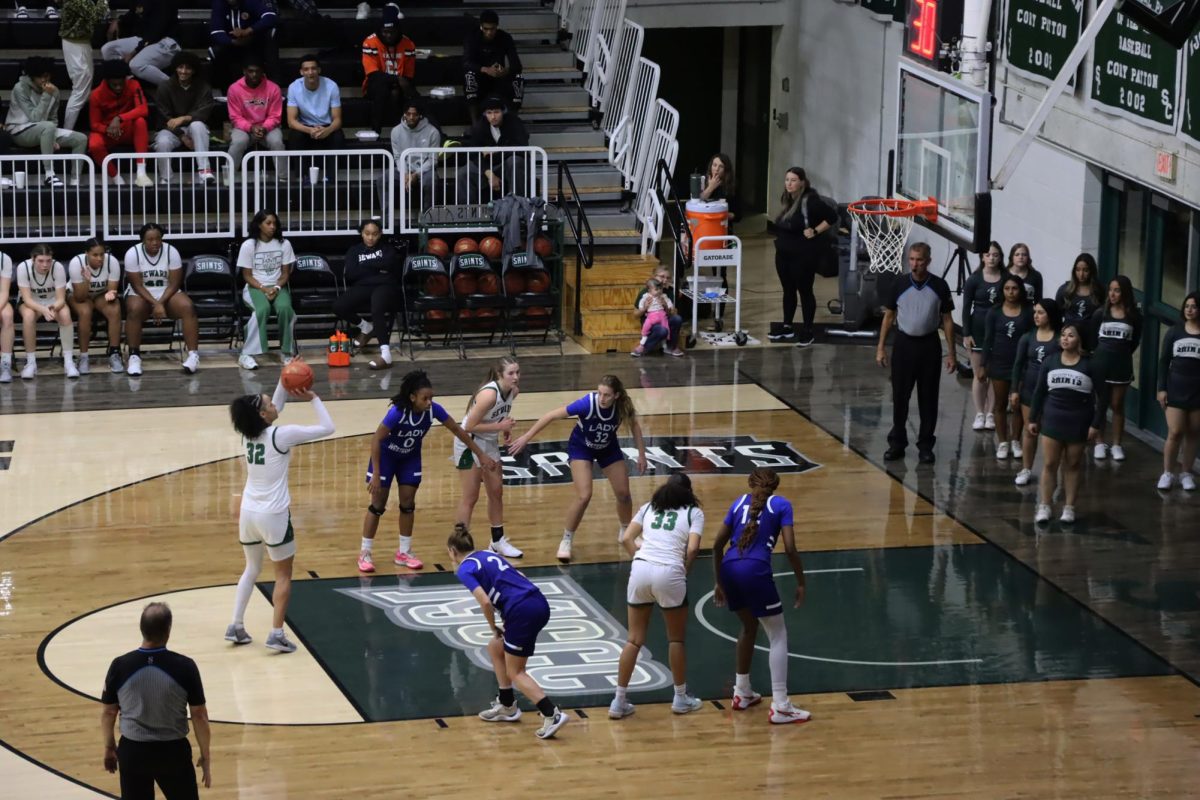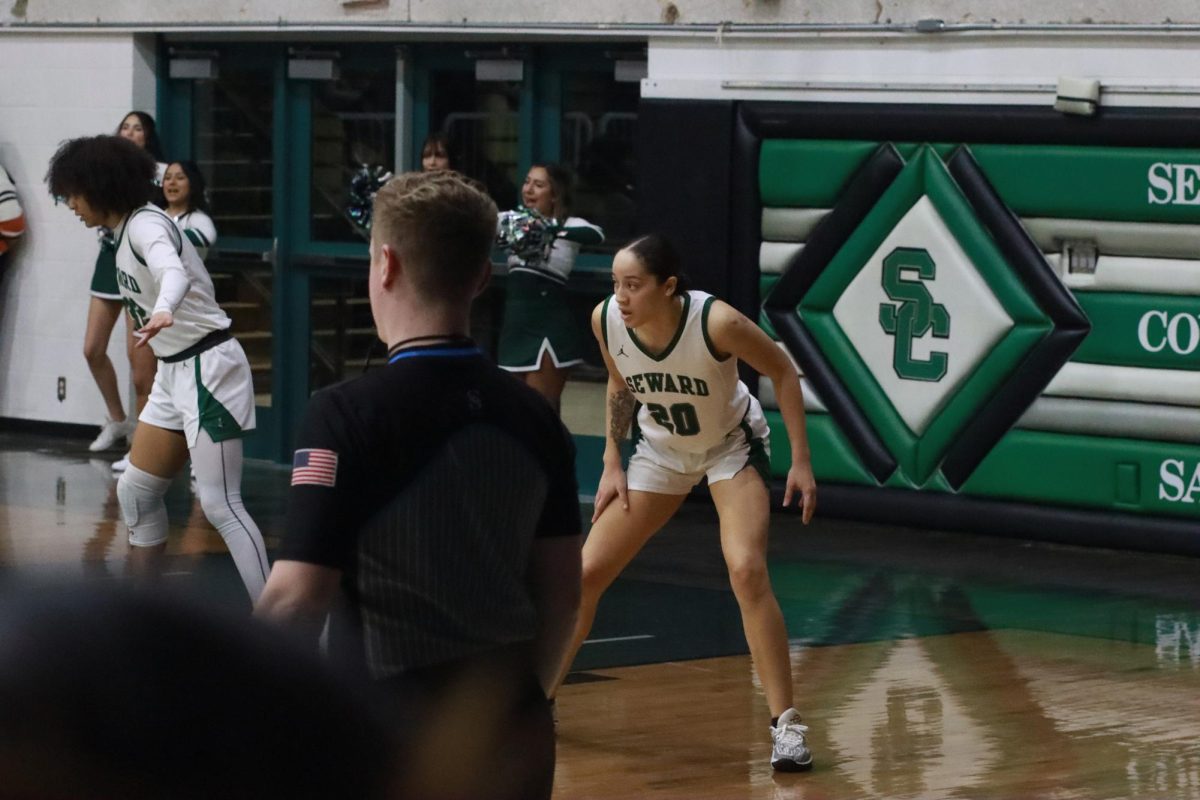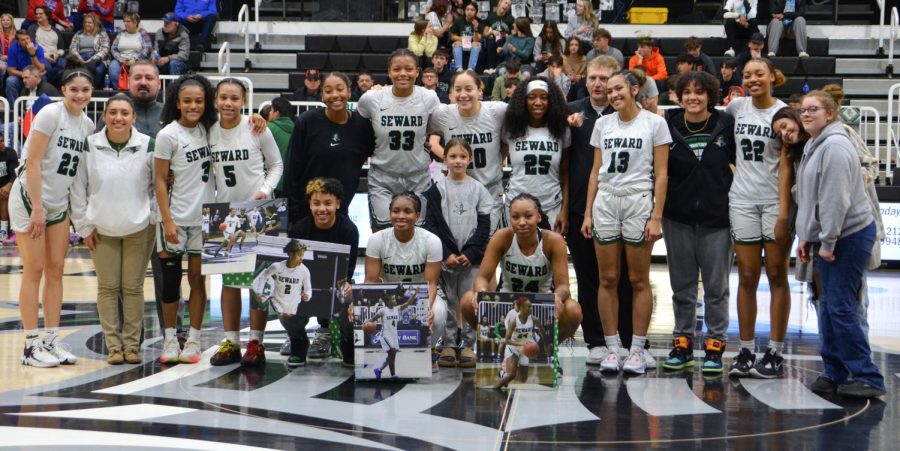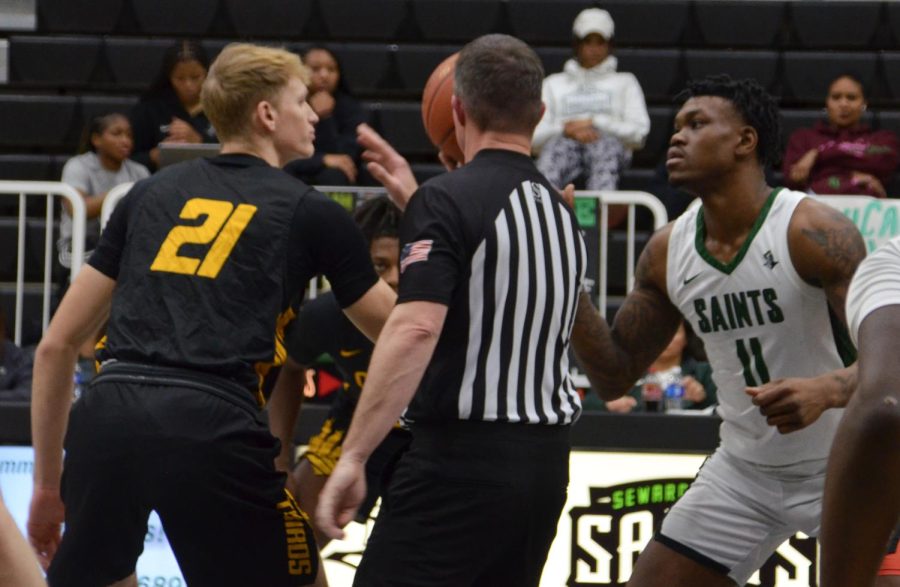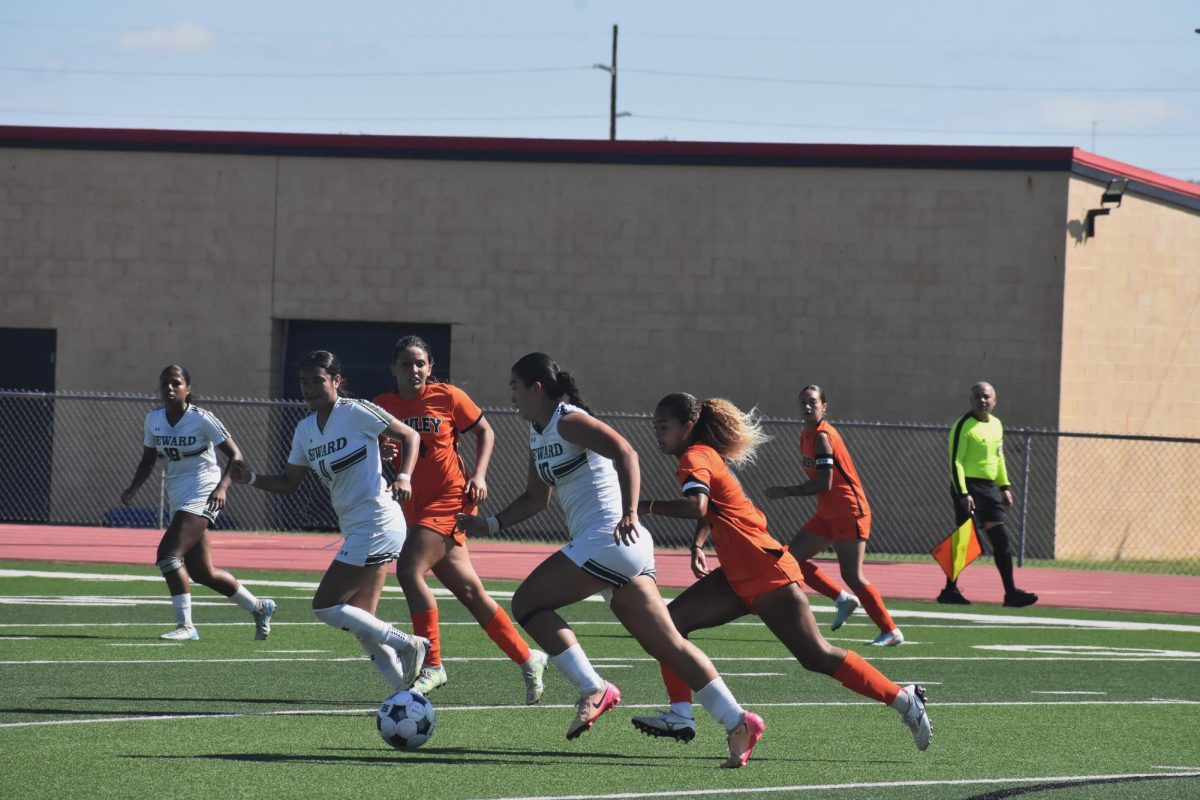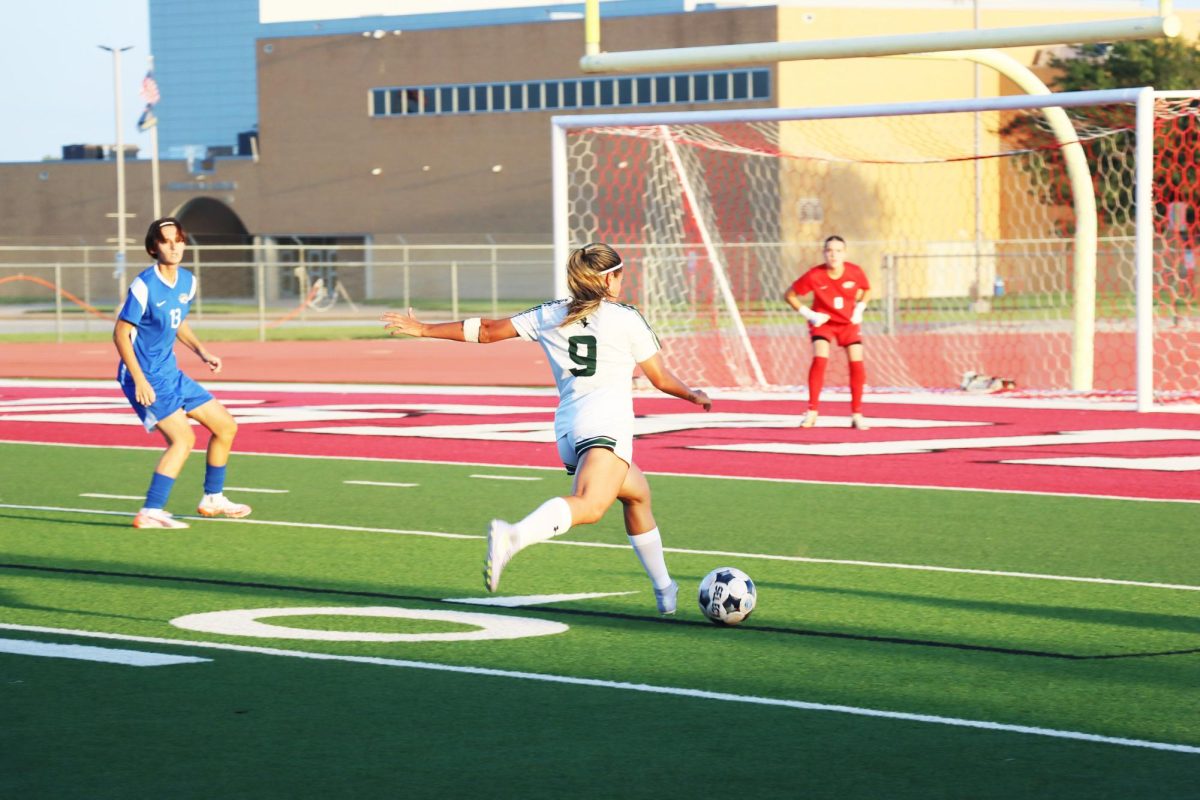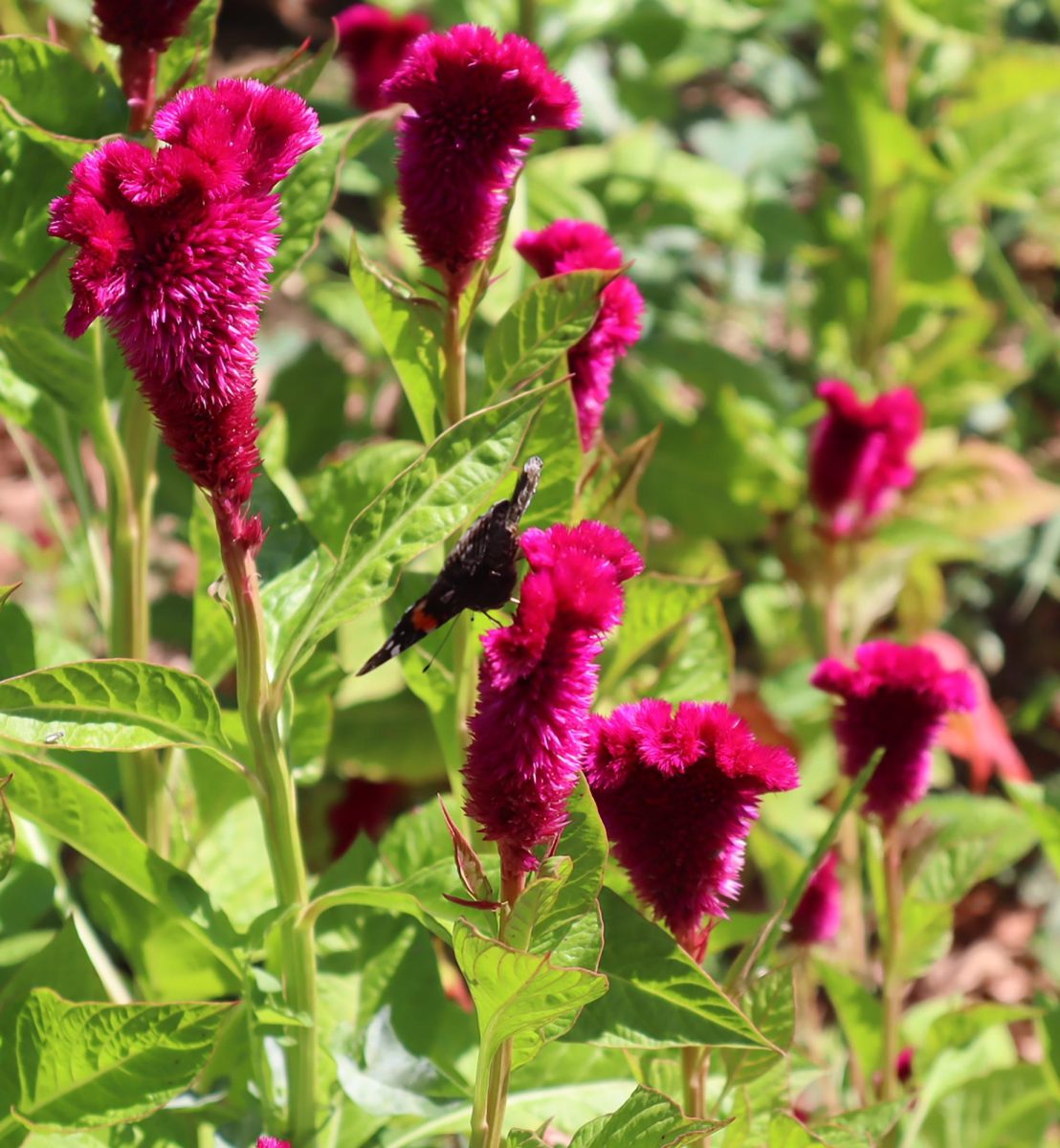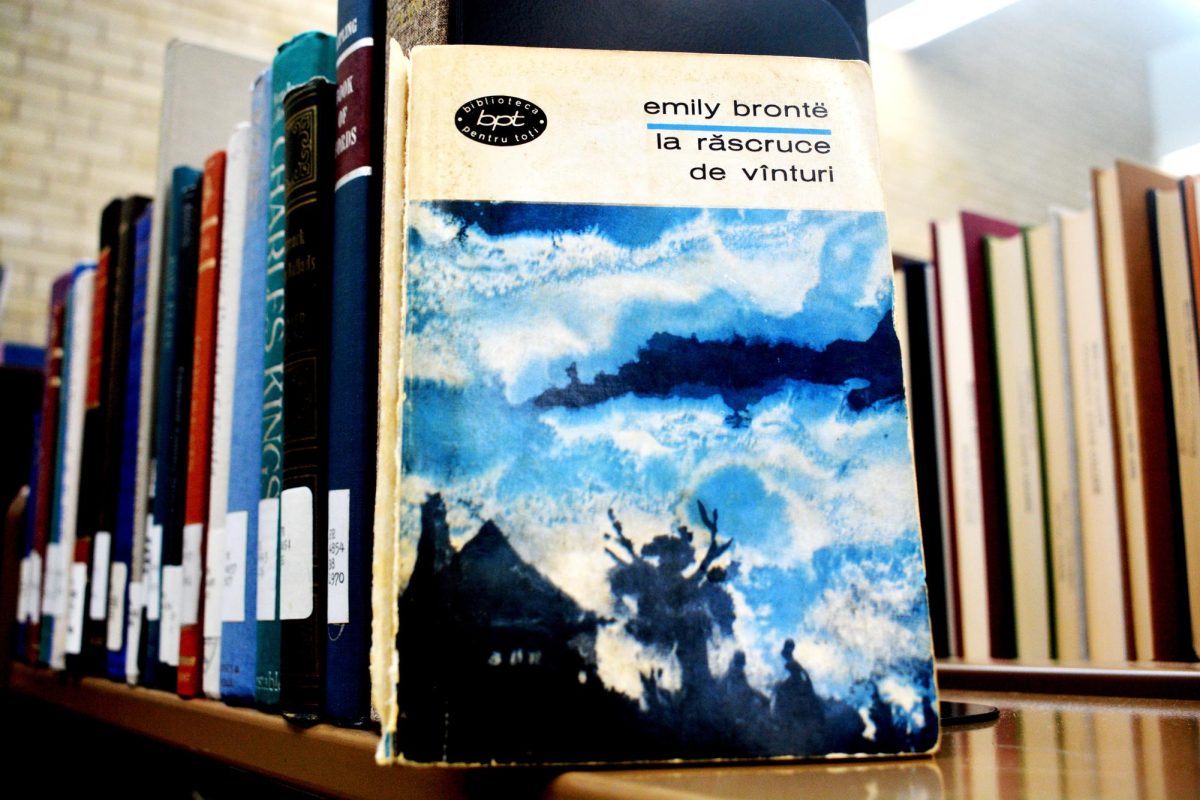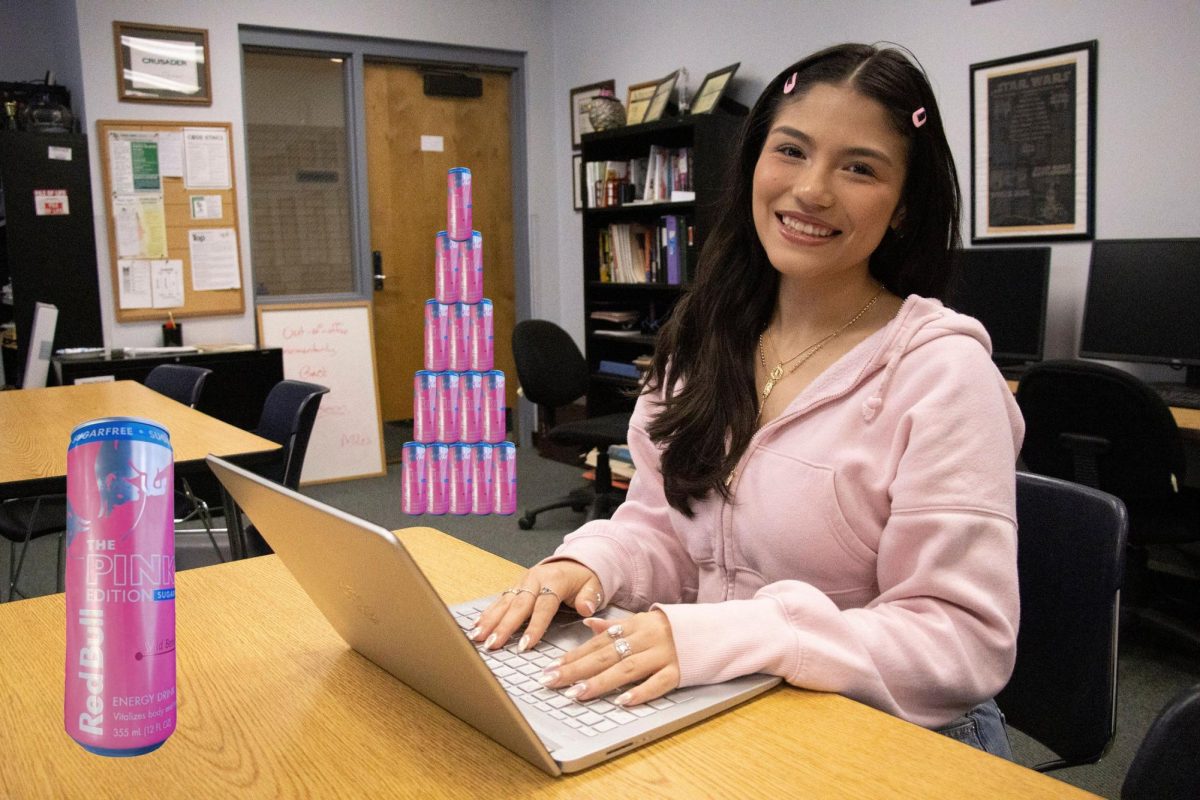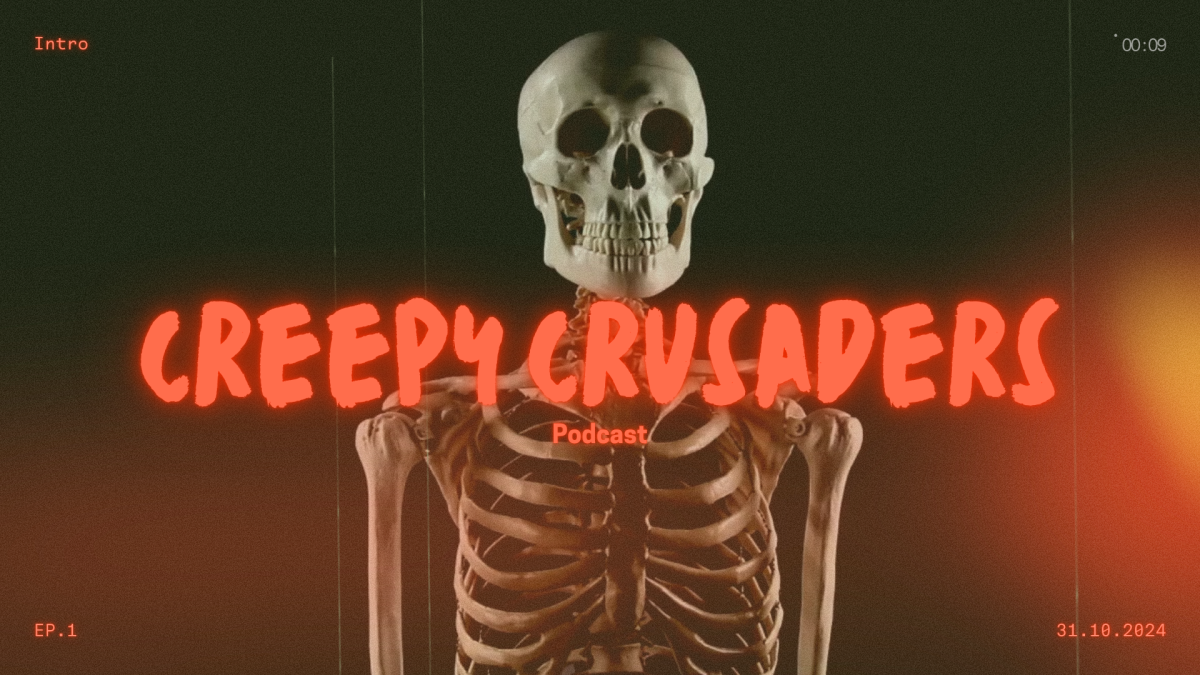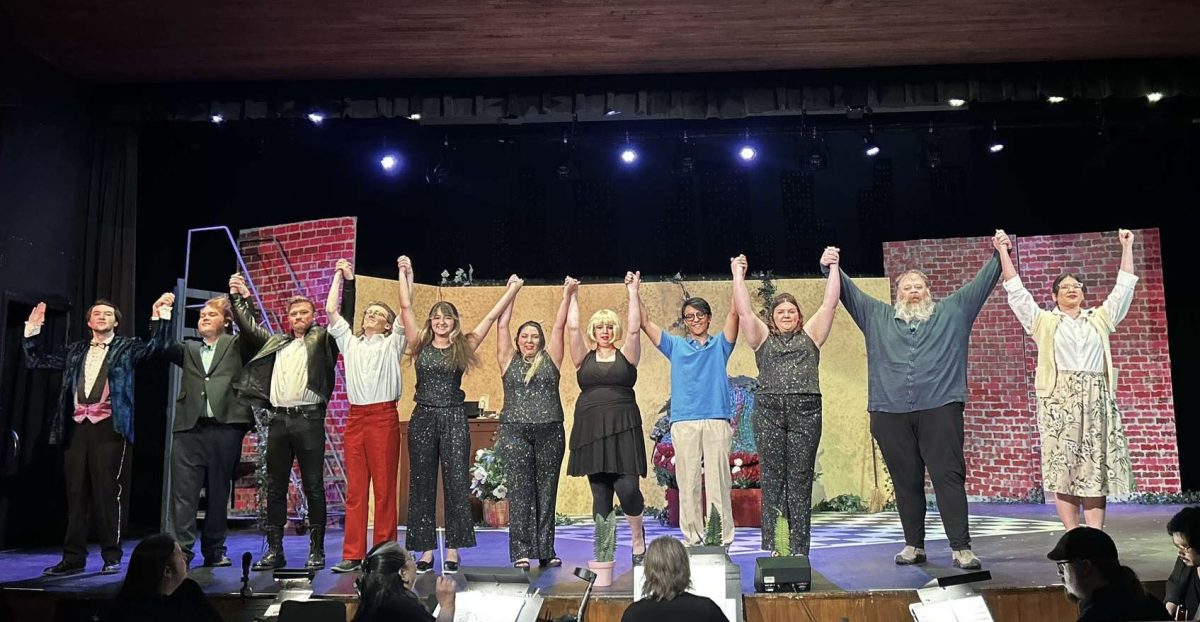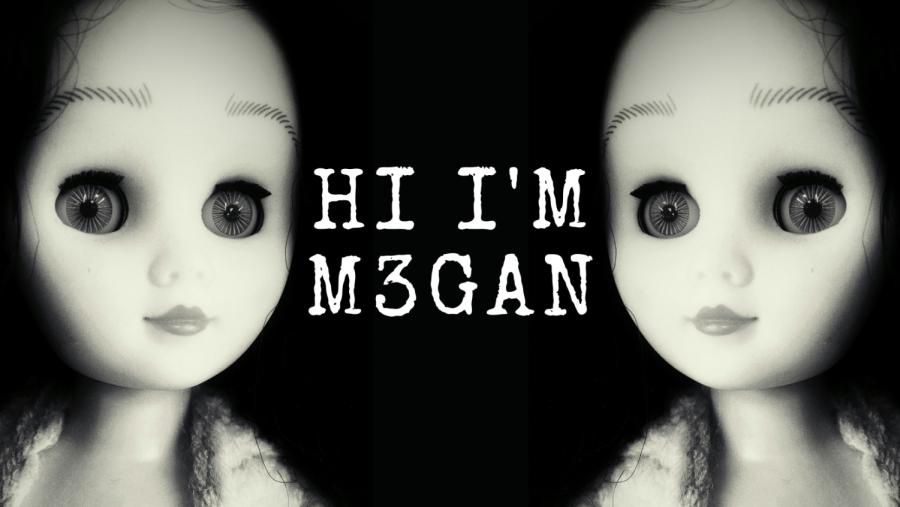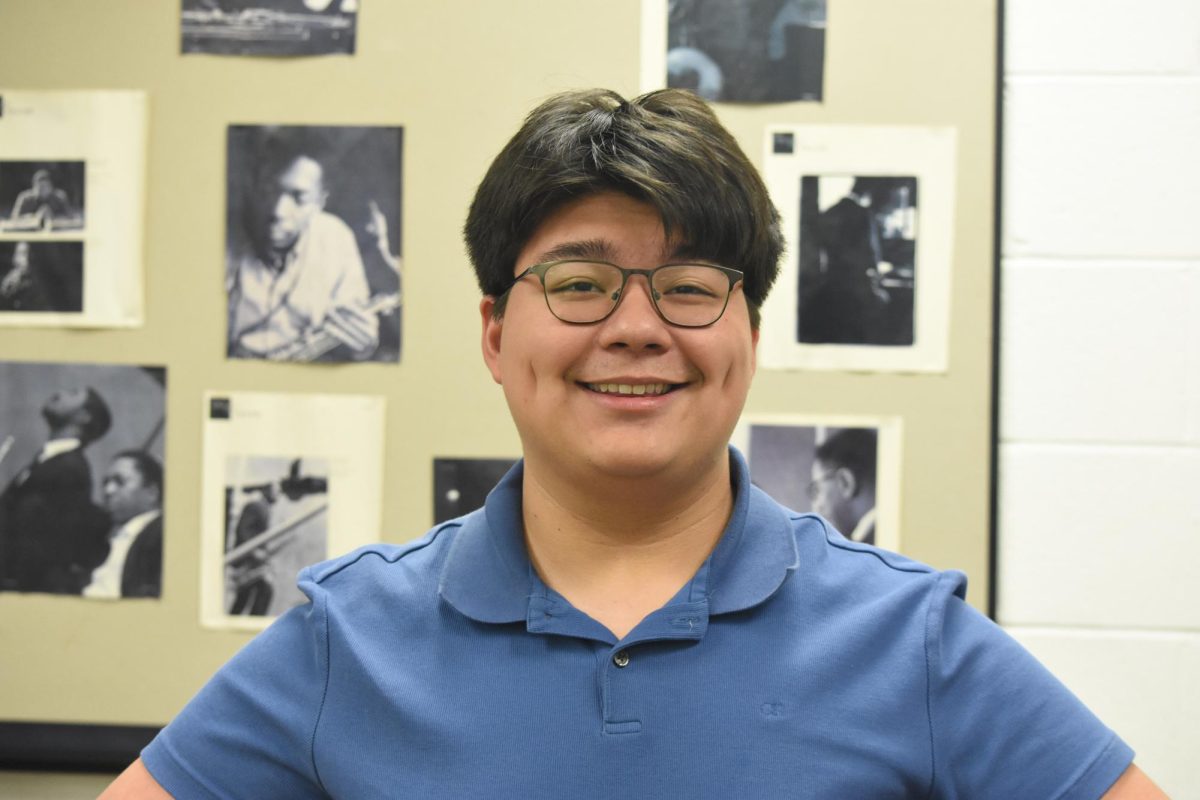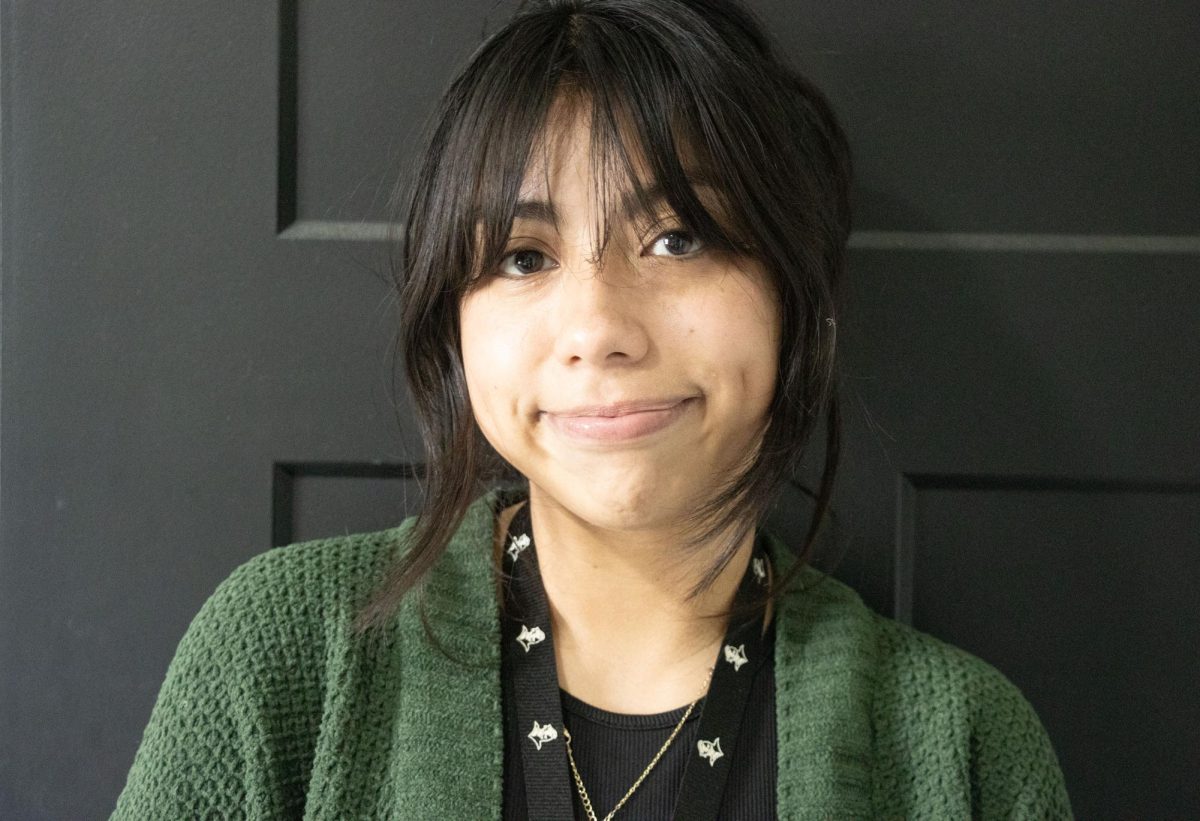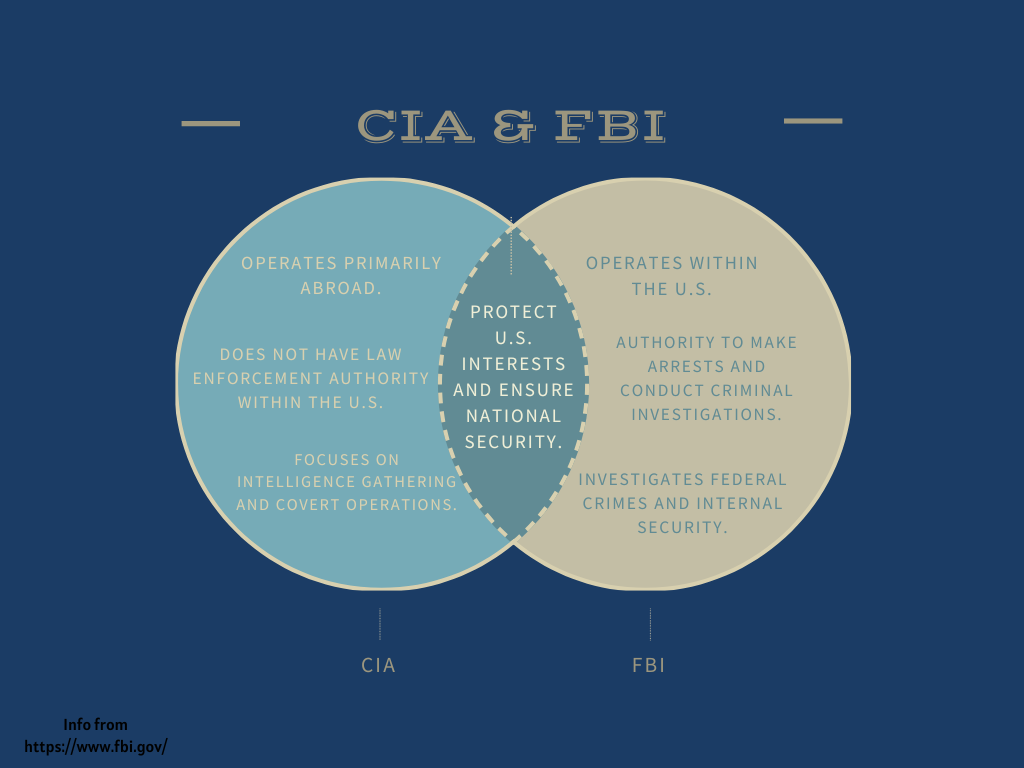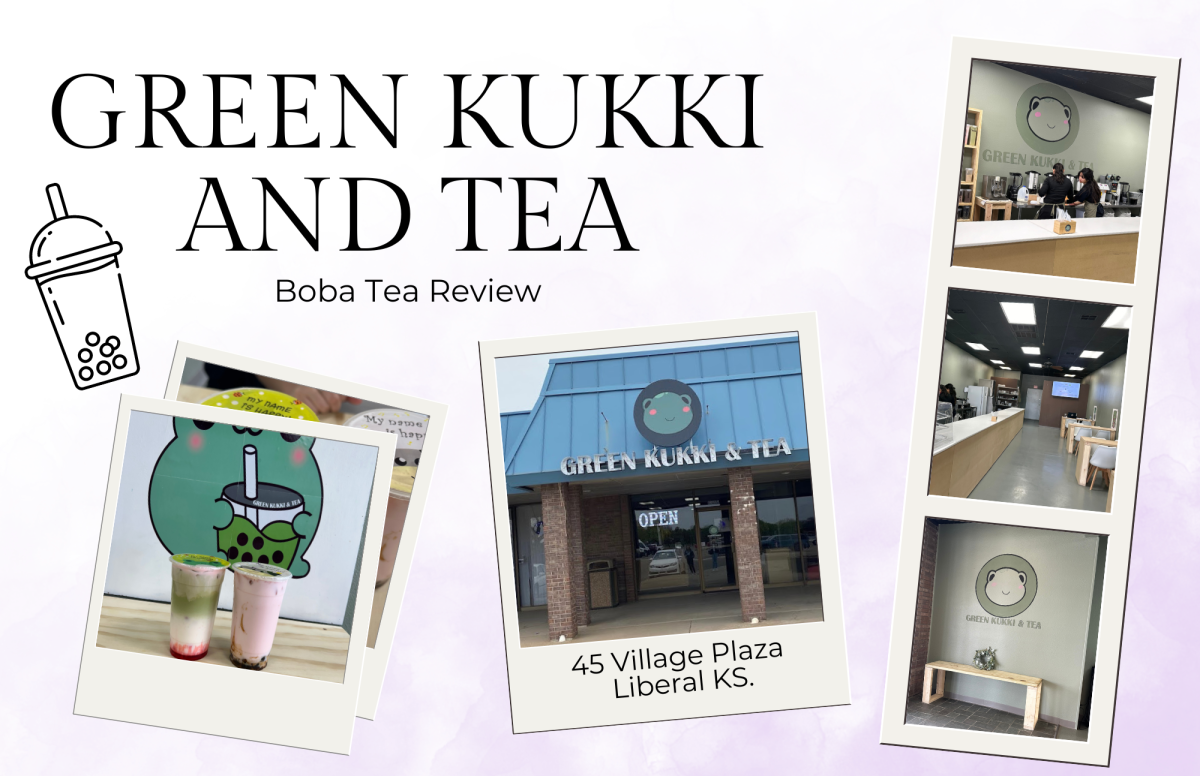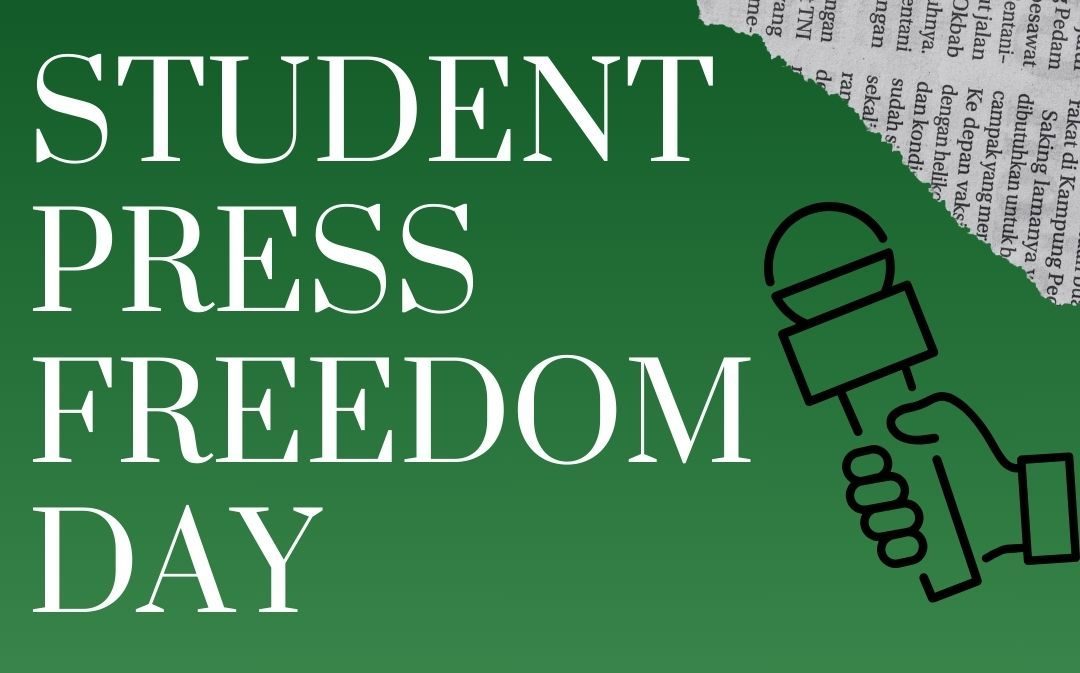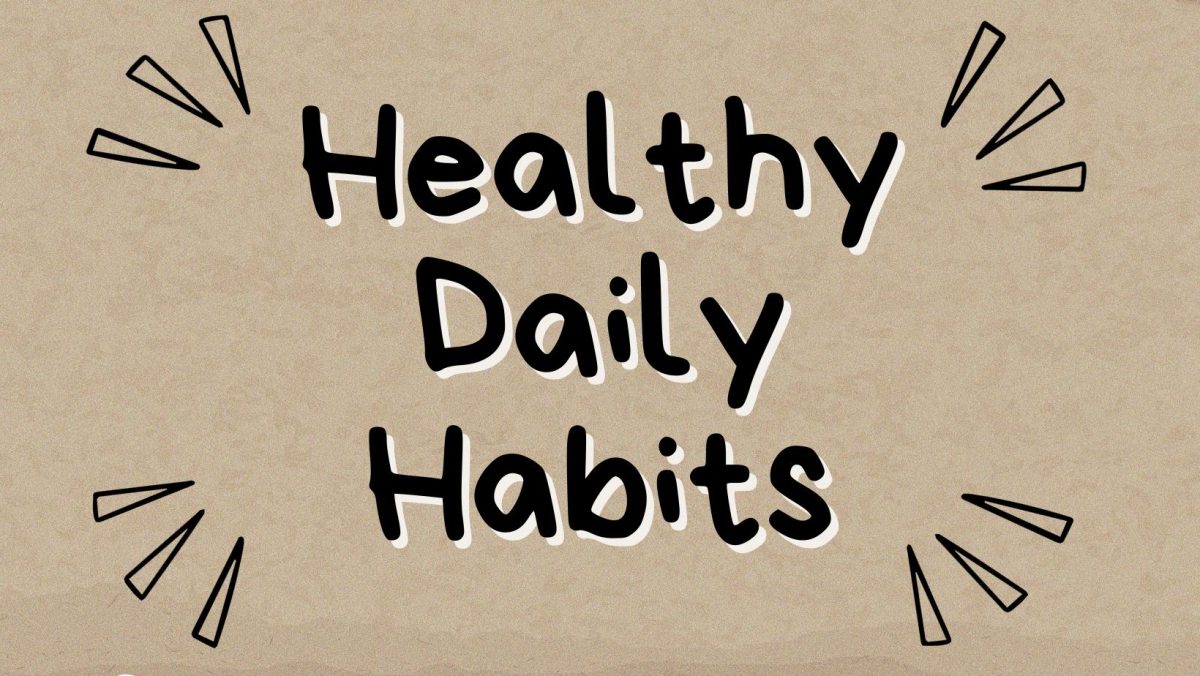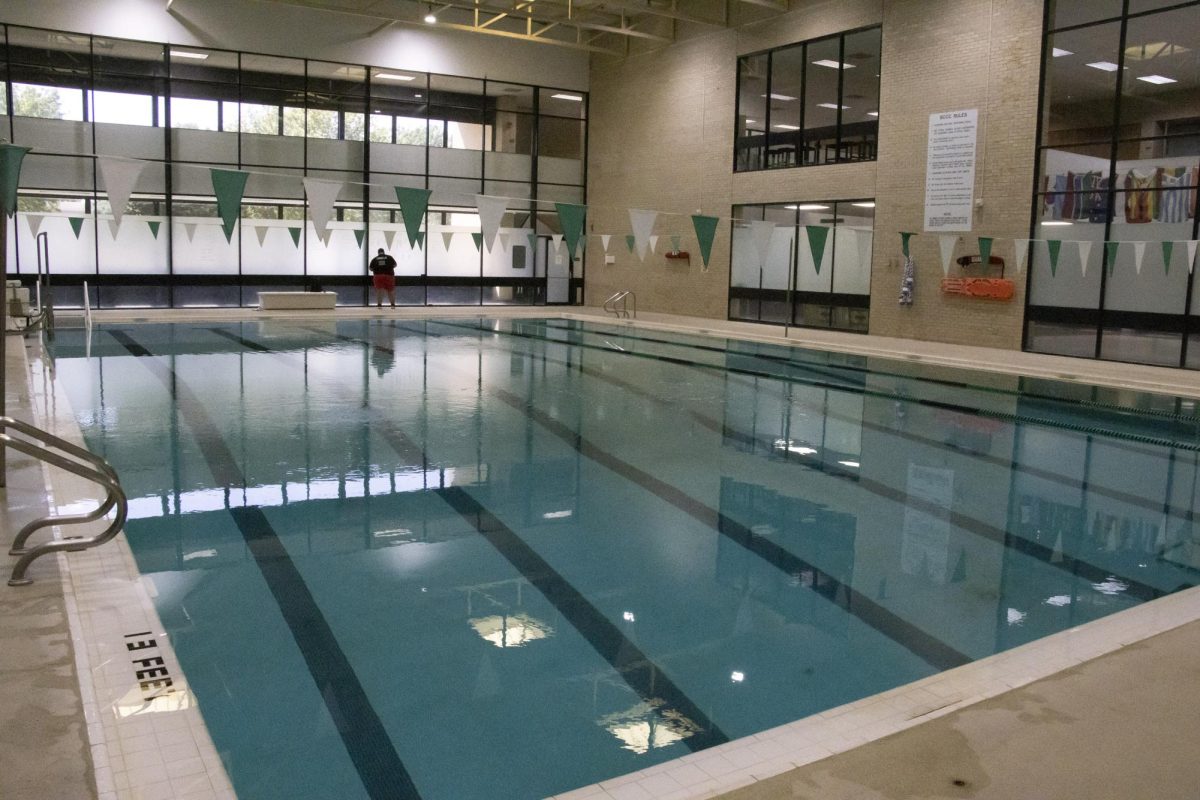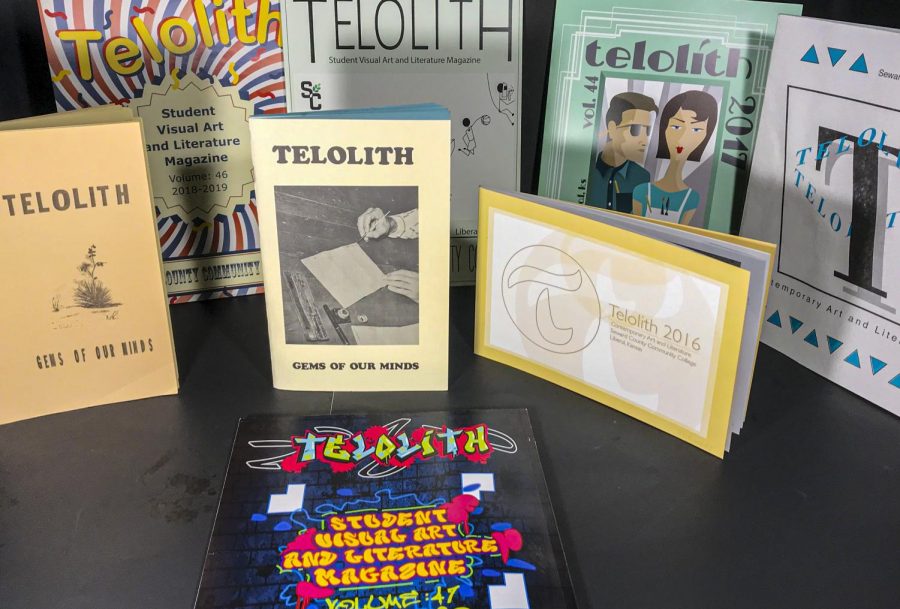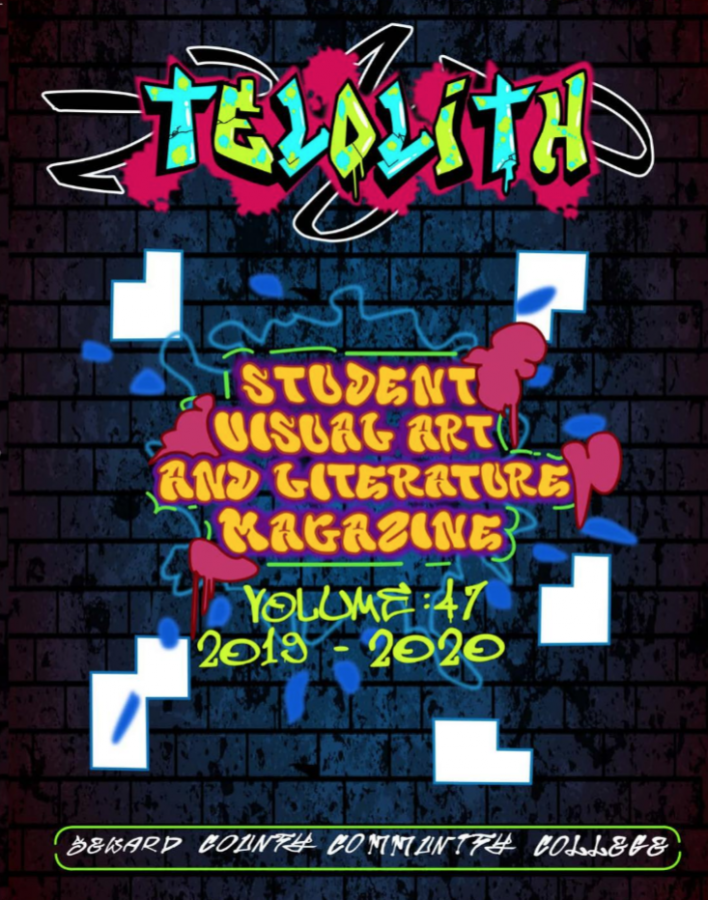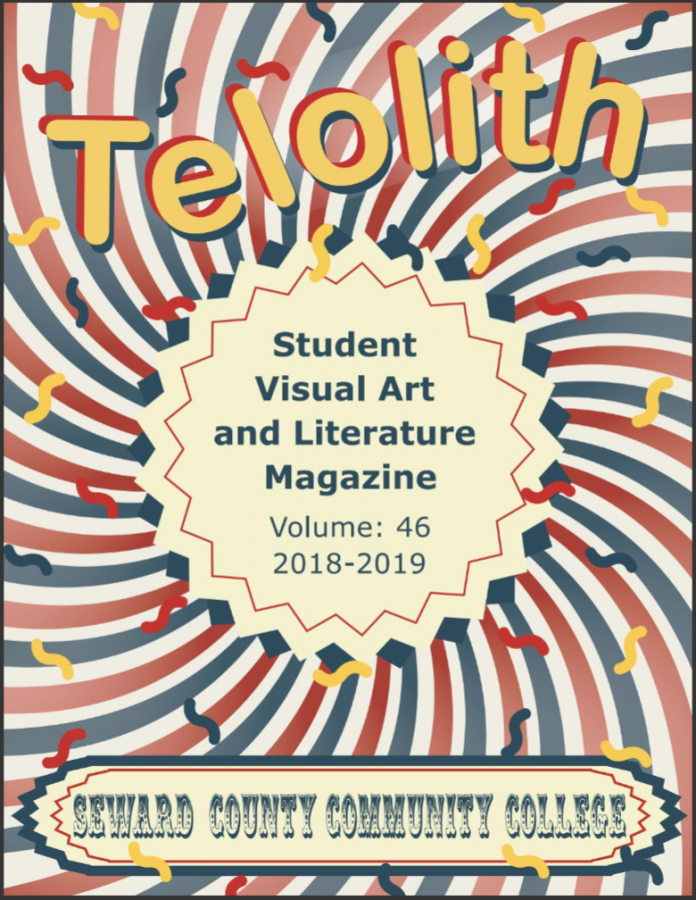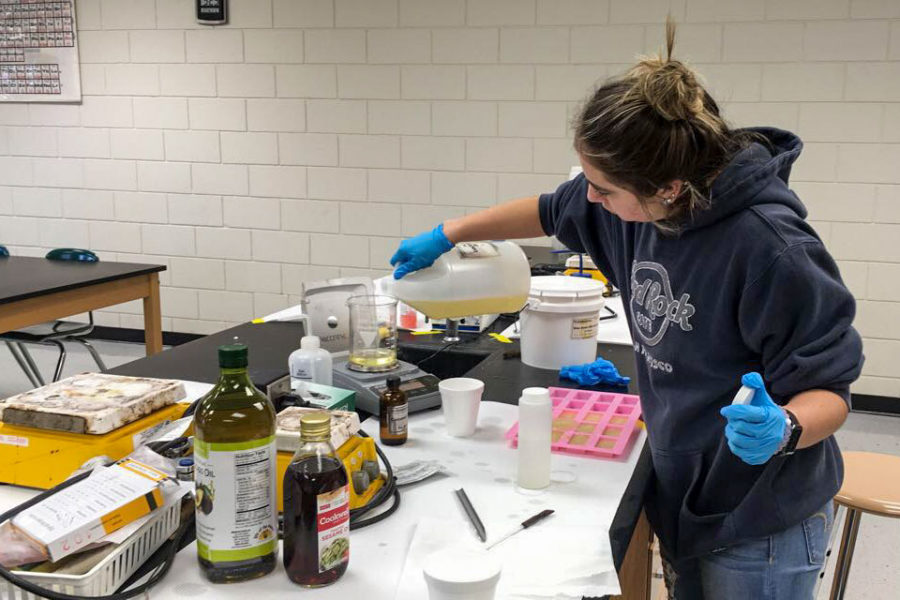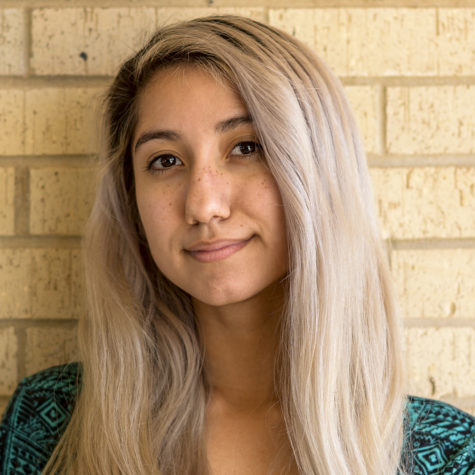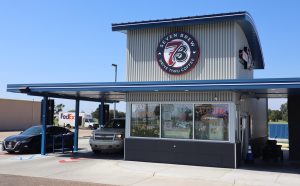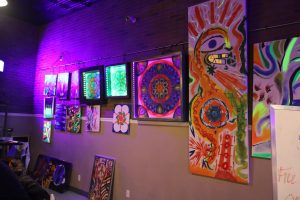Chemistry students design, create soaps
Hayden Marties measures ingredients for a lab project making soap. For many chemistry II students, it was trial and error. Calculations had to be made to make sure the right combination of oil and lye was mixed. Too much lye is could cause burning to skin.
April 25, 2019
When most people think of chemistry, images of complicated equations and strange, dangerous chemicals may come to mind. However, Seward County Community College students taking a Chemistry II class this semester might think of something a little more unremarkable: soap.
Students enrolled in the course this year have been working hard to design and create their own unique soaps from scratch using the concepts they’ve learned so far in class.
“We had to start by researching soap recipes,” Hayden Martinez, a freshman physical therapy major from Liberal, said. “Then, we altered the recipes by mixing various oils with the lye until we had a working formula.”
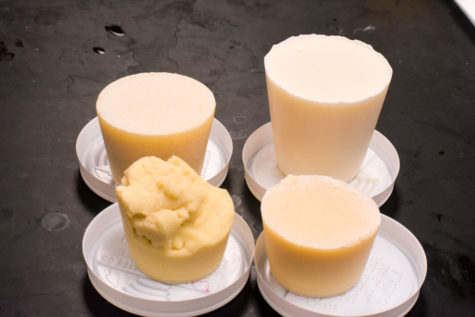
Students in College Chemistry II spent the semester making different kinds of soap. The cold process method used to make these types of soap combines oils and lye, causing a chemical reaction.
Once students understood the process, they began to create various soaps for specific demographics using different scents and oils.
“Soaps are unique, and they’re made for specific purposes,” Manuel Aguero, freshman chemical engineering and corrosion technology major from Liberal, said. “We made soaps for people with dry skin, sensitive skin, and skin that needs a boost in health and softness, for example.”
However, designing the perfect soap is no easy task. As they worked to cater their creations to specific groups, many of the students learned that finding the correct combination of ingredients to use can take a lot of time and effort.
“It took us a long time to figure it out, and we failed a lot. We used too much oil the first time, and the mixture never hardened at all. Another time, we went to shake up the mixture and it hardened in the bottle before we could even pour it into a mold,” Martinez explained.
Although the project was challenging, material covered in the class throughout the semester helped prepare students for the assignment.
“In class we learned a lot about how reactions work,” Courtney Eagan, sophomore pre-physical therapy major from Forgan, Oklahoma, said. “We had to experiment a lot, but that background knowledge helped us to better understand our soaps.”

The soaps were presented April 25 to the public. Each project was evaluated and judged without any of the students in the room. One of the requirements was that the soaps had to be packaged like soaps for sale in the store.
Creating the soaps allowed students to apply some of the concepts covered in their science classes, of course, but this project also borrowed lessons from another subject area: business.
“With this assignment, I think that knowing what companies do when they make a product, from designing it, to testing it, to keeping records of what works and what doesn’t was important,” Aguero said.
On April 25th, the student’s efforts were presented to judges who tested the quality of their soaps as part of a competition for the highest grade. The students also sold their soaps to people during the event.
“Judges will choose the best soaps based off of what they would actually be willing to purchase. The winner gets an A,” Aguero explained.
Regardless of whether they win or not, though, these students have already gained something extremely important as a result of this project: practical knowledge
“Who knew that chemistry could be used to make something as ordinary as soap,” Eagan said. “Clearly, there’s a lot of really cool things to learn about life through chemistry.”


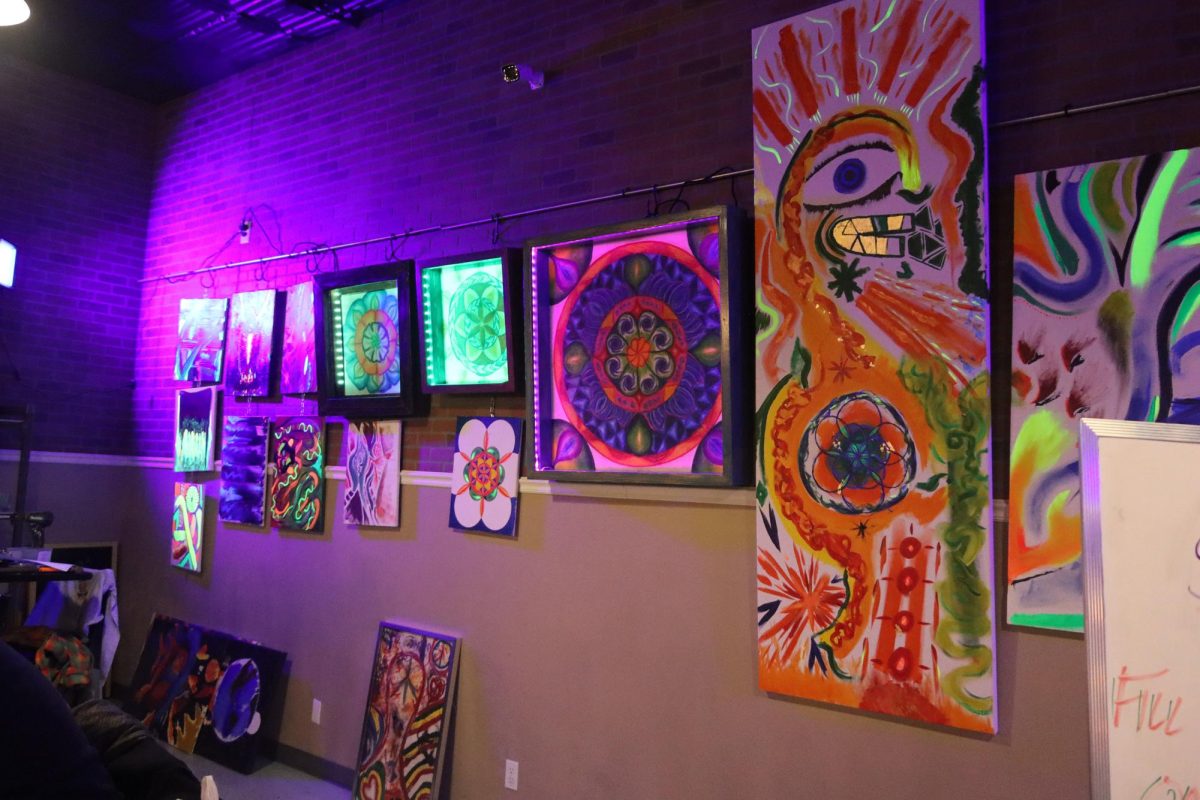
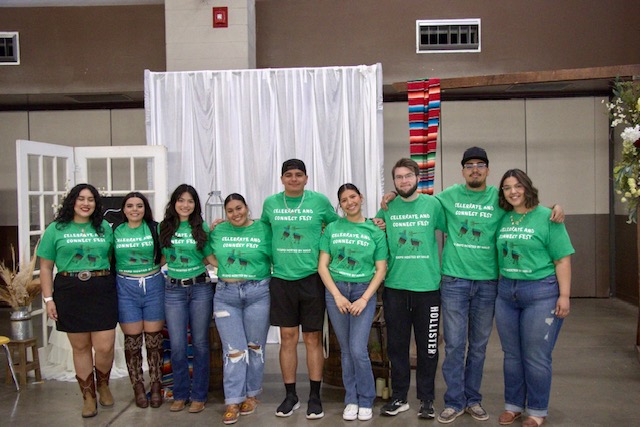
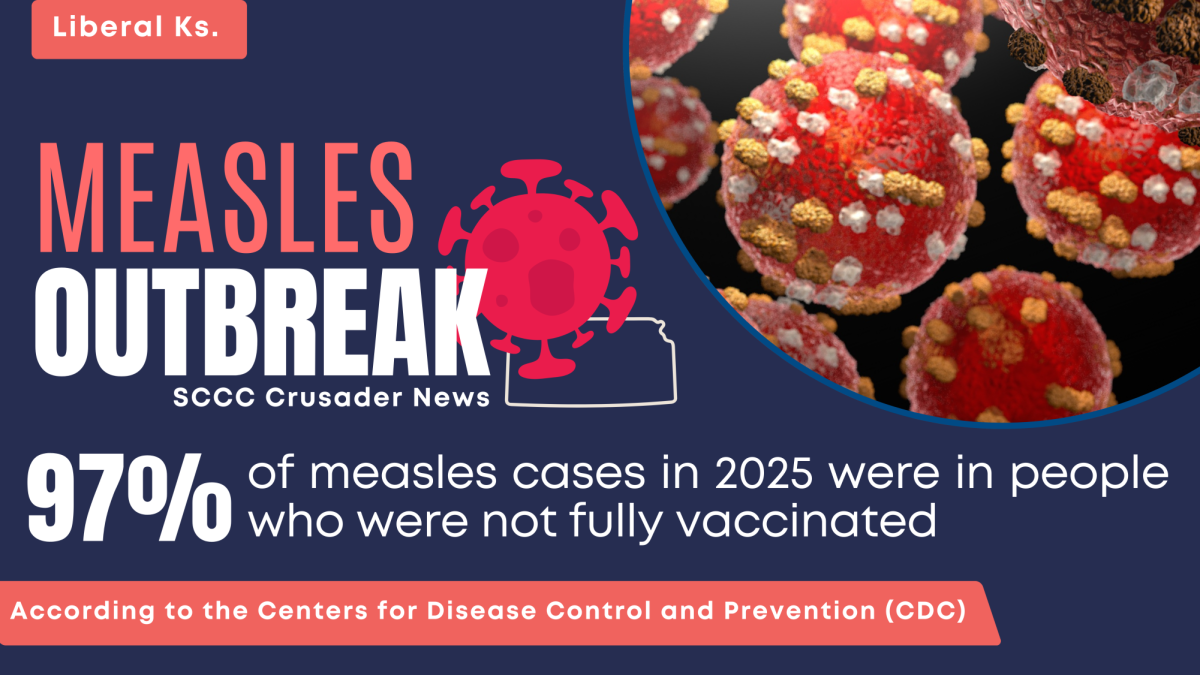
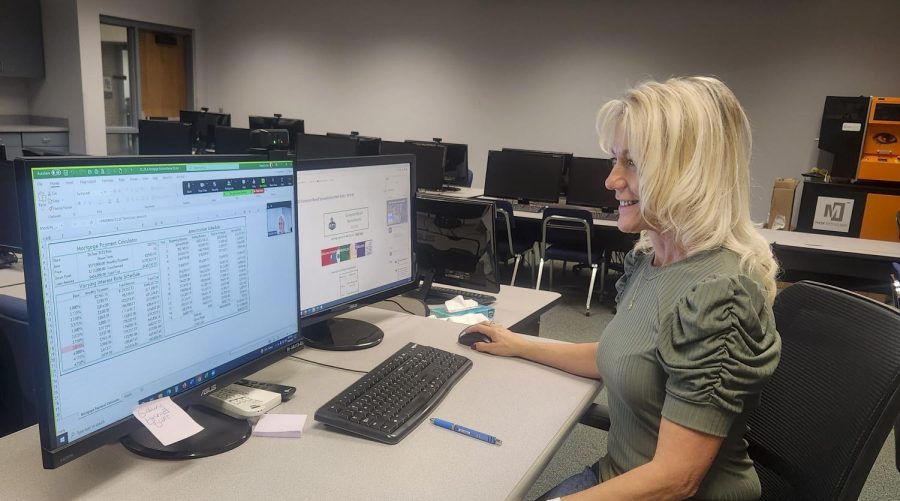


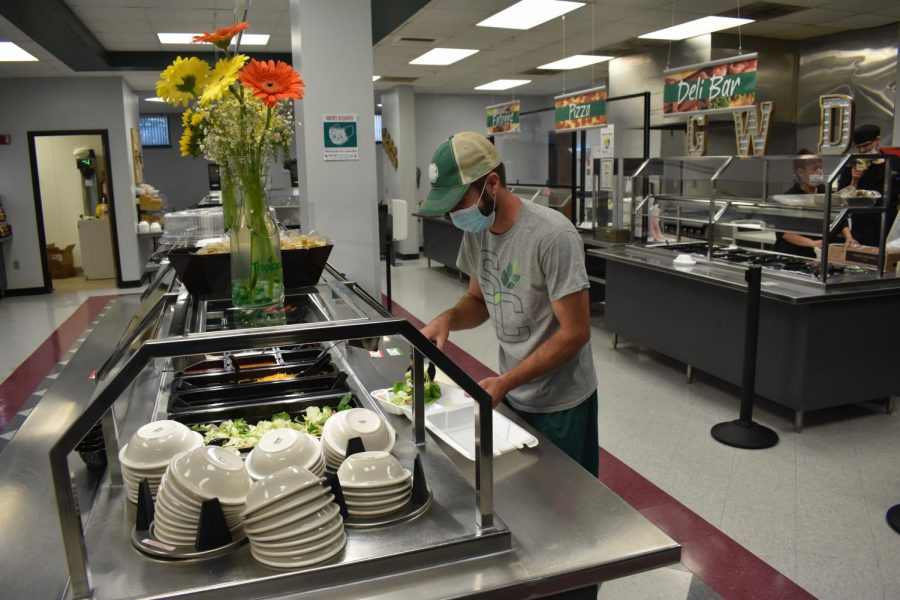

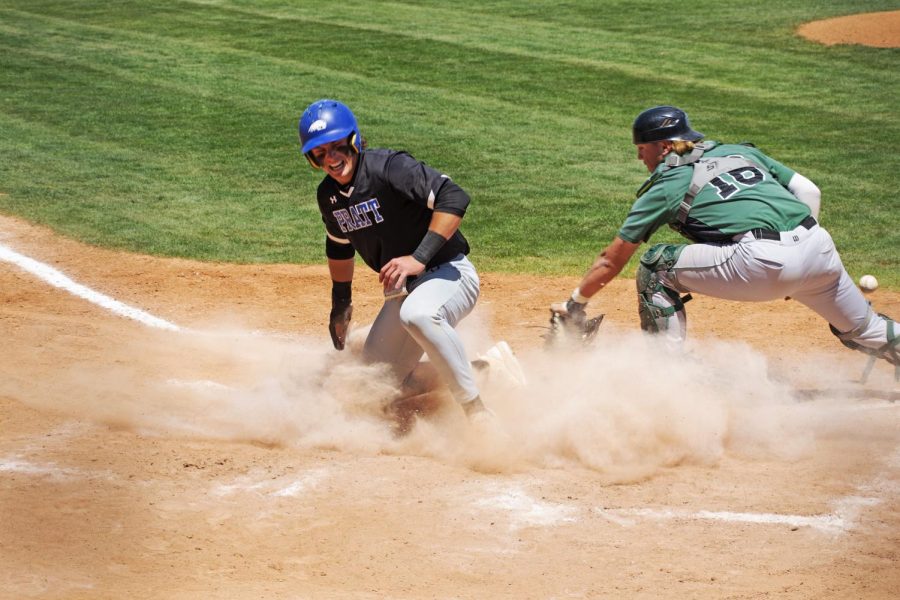
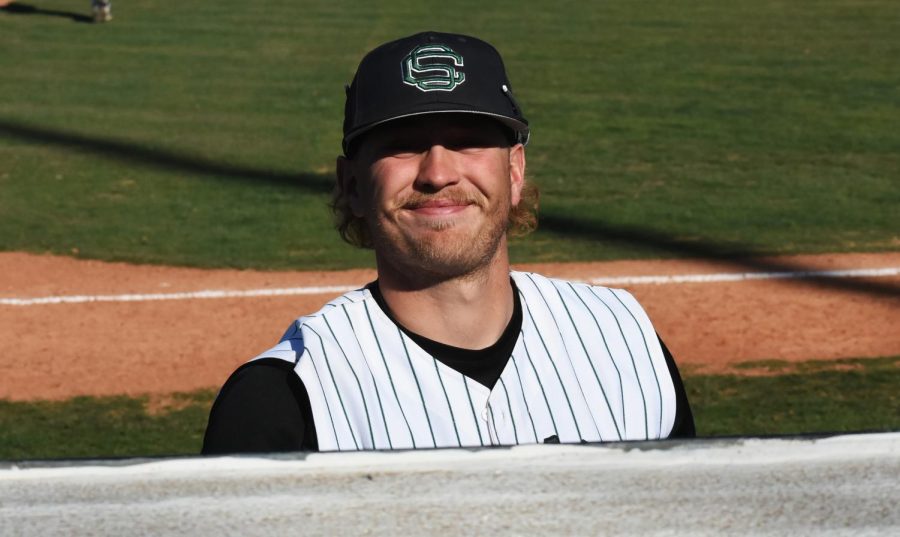
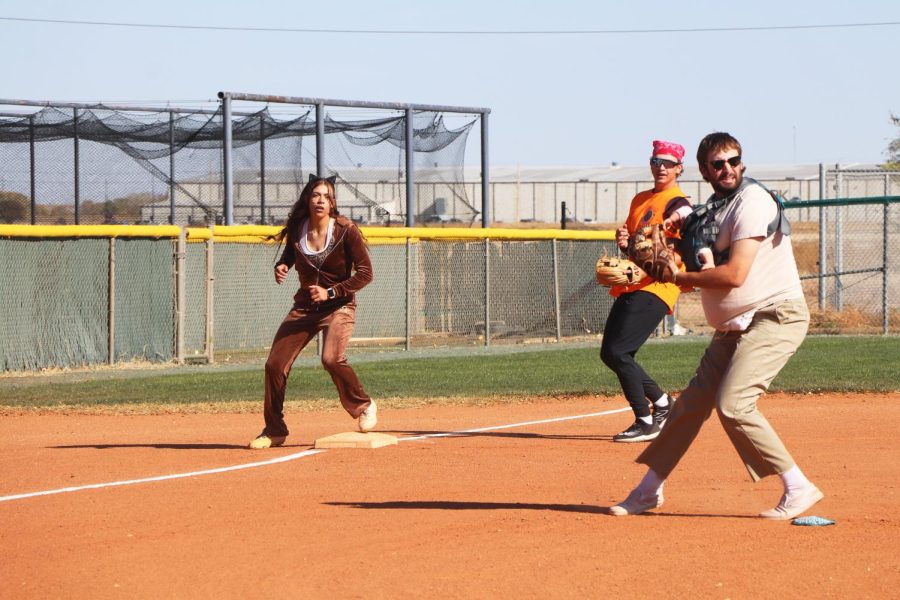
![The sophomores were recognized on the field instead of walking across the stage during their doubleheader. They received their diplomas and a picture of themselves playing during their career at Seward. [Pictured left to right are Dylan Day, Reed Thomas, Jase Schneider, Mason Martinez, Gannon Hardin, Brody Boisvert, and Zach Walker]](https://crusadernews.com/wp-content/uploads/2022/05/WEBDSC_0275-900x454.jpg)
